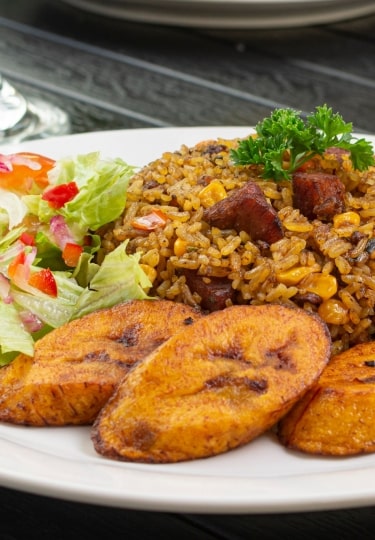The Dominican Republic’s food has many similarities to that of other countries in the Caribbean, particularly Cuba and Puerto Rico. That’s down to the shared Spanish origins, heavily influenced by African cuisine.
The original Tainos people, along with more recent immigrants from the Middle East, Asia and elsewhere, have also added their cooking to the mix. The result is a delightful, delicious blend, and some uniquely Dominican dishes.
From the lunchtime staple of La Bandera Dominicana to the sweet Quesillo dessert, you will enjoy a cuisine that is completely intertwined with national identity. Dominicans love their food, and you will too.
Here is a guide to some of the best Dominican food.
Plátanos

Plátanos
A staple of Caribbean cuisine, plantains (plátanos in Spanish) are as central to Quisqueyan (Dominican) identity as apple pie is to the USA. To call someone “aplatanado” is to say they are fully integrated into local culture.
These starchy fruits from the banana family are treated as a vegetable and cooked before eating. Unlike bananas, they can’t be eaten raw.
Like that other basic carb, potatoes, they can be boiled, fried, baked, grilled or steamed. Aguají, roasted plantain soup, is used as a cure-all for everything from a hangover to the flu.
Tostones
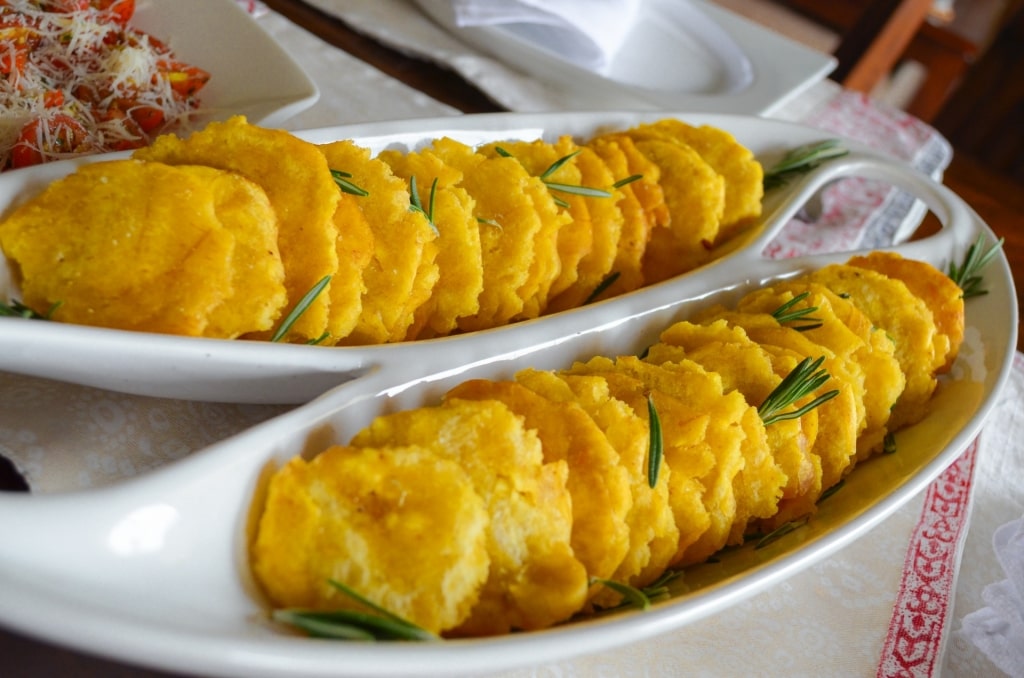
Tostones
The easiest description of tostones is a kind of French fry, but made of green plantains. Thick, one-inch slices are fried, pressed flat, then fried again to golden crispness.
Served fresh and liberally sprinkled with salt, they are a common side dish in restaurants and in roadside stalls. Like french fries, they are great with tomato sauce and/or mayonnaise.
Tostones are a good complement to dishes such as, well, anything you might eat with French fries. Fish, meat, a fried egg… what doesn’t taste better with some deep-fried carbs?
Bread
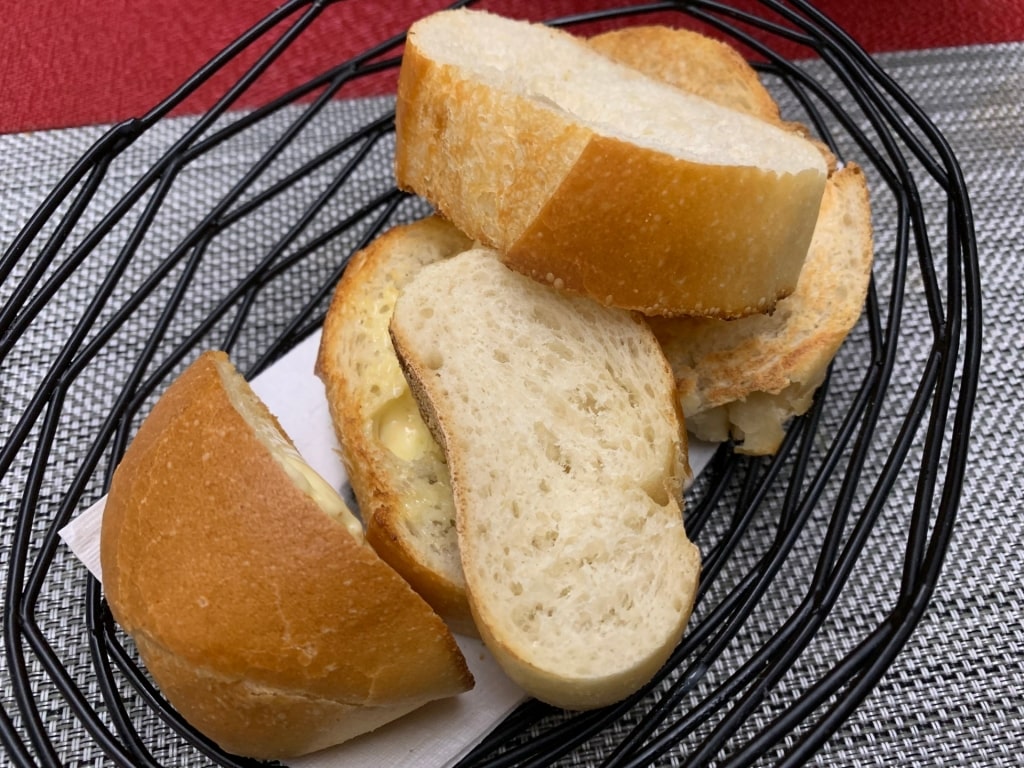
Bread
Many Dominicans start their day with pan de agua: bread rolls, crusty but with a soft center like a French baguette. You can even find them made in a mini-baguette style in bakeries or supermarkets.
They make a great, fast breakfast, eaten with hot chocolate, or coffee. A variation with egg is called pan de huevo, which is a bit lighter.
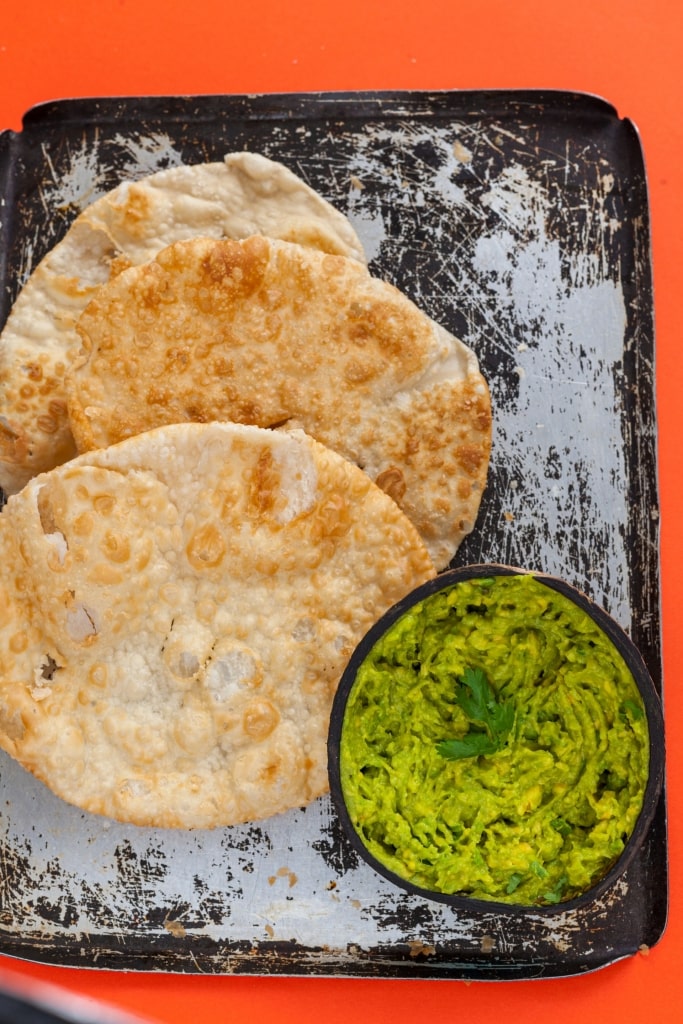
Yaniqueque
Yaniqueque is a fried bread which probably takes its name from the “johnny cakes” found throughout the Caribbean. It’s made with flour, butter and baking powder, shaped into flat rounds before frying.
Wheat is expensive to import, so the traditional alternative was cassava bread or casabe. It’s a healthy, crispy flatbread, with its roots in pre-Columbian society, and is as versatile as pitta bread.
Mangú

Mangú
Mangú is a dish of mashed plantains. Peeled and boiled, the plantains are then mashed like potatoes.
The mash is smoothed with a bit of water and fat, such as oil or butter. Seasoned with salt, it is then topped with cebolla roja con vinagre—sauteed red onions in vinegar.
You’ll find mangú on breakfast or brunch menus or as a side dish. In the morning, it’s often served with fried salami, fried eggs, and fried cheese.

Los tres golpes
This heart-stopping trio is known as “los tres golpes”—the three hits. Avocado can be added to make “los cuatro golpes”, just in case los tres golpes is too healthy for your taste.
You might be surprised to see salami being fried in los tres golpes. Think of it like bacon and it makes more sense to add that extra crispiness.
Every region in DR has its favorite salami brand, with fans having preferences for Induveca, Campesino or Checo salamis. Campesino mixes pork, turkey, and beef, for example, while Induveca is beef and pork, with a smoky flavor.
Farina
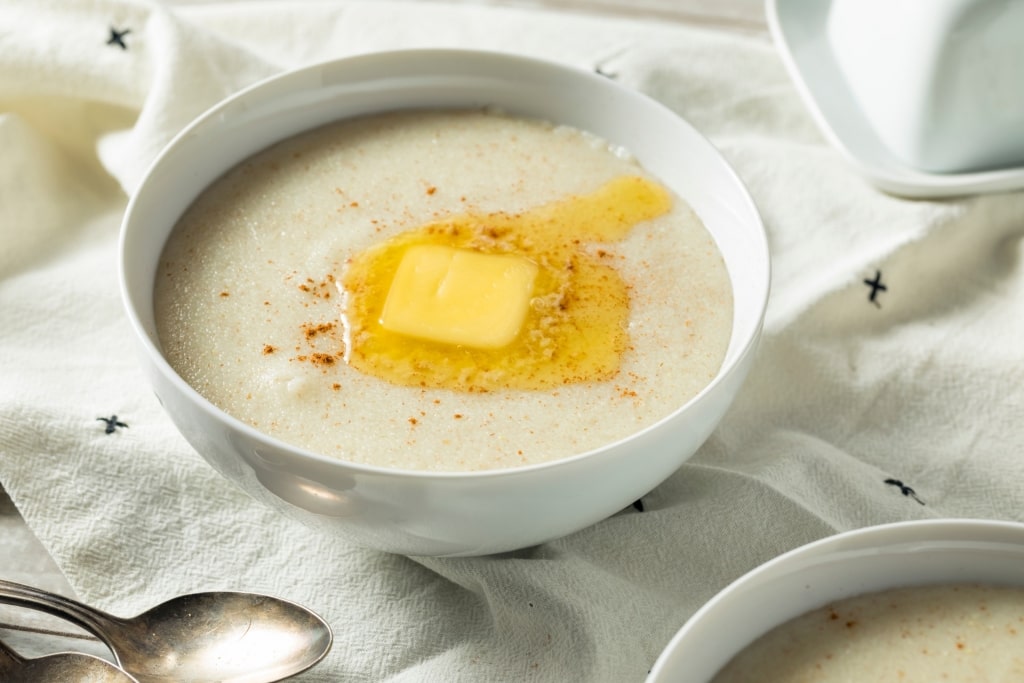
Farina
Mangú, and los tres golpes even more so, is typically seen as a good breakfast for those facing a hard day of work in the fields. A lighter option for children or office workers to start the day is a plate of farina, a cream of wheat porridge.
The most popular brand is “Cocimiento Rápido” Harina El Negrito, a fast-cooking porridge boiled up with milk. What makes it typically Quisqueyan is the addition of spices, namely cinnamon, cloves and fresh nutmeg.
Farina can also be made with cornmeal or oatmeal. Either way, for Dominicans, it’s a quick, hot and tasty dish.
Pastelito/Catibía

Pastelito/Catibía
If you’ve ever had an empanada, or Jamaican beef patty, you’ll recognize a pastelito as the delicious Dominican equivalent. It’s a deep-fried (or baked), half-moon, pastry parcel, usually containing meat.
Popular fillings are pork and chicken, but you’ll also find beef and cheese, or vegetable versions. A sugar-sprinkled version filled with fruit pulp such as guava makes a dessert.
If cassava flour (“catibía”) is substituted for wheat, the pastelito becomes the crispier catibía. Once a cheaper option for the poor, this cassava flour option has now been revisited with gourmet fillings such as lobster or shrimp.
Quipes
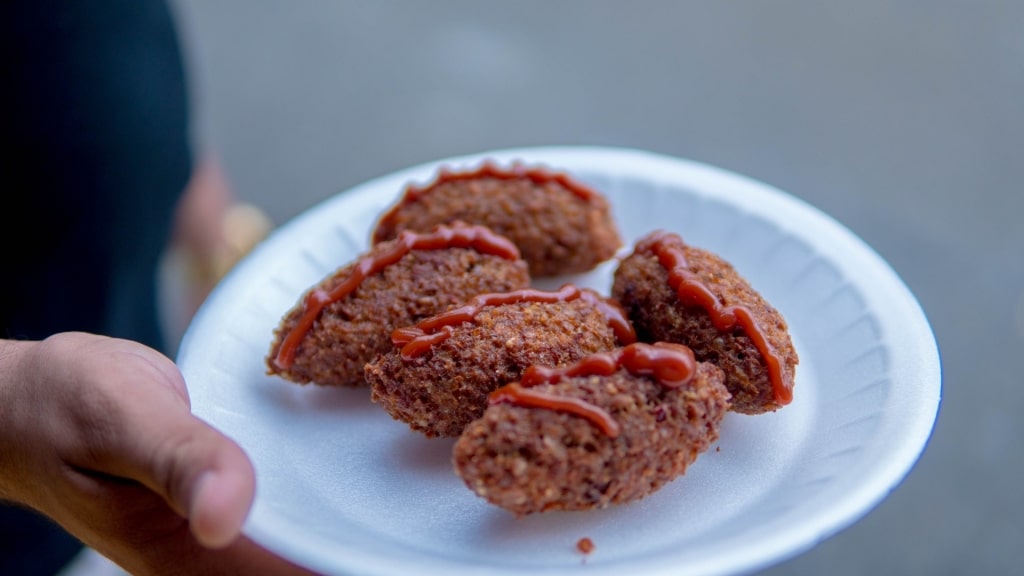
Quipes
A mid-1900s import from the Middle East, quipes (or kipes) are the local version of kibbeh. Ground beef (rather than the lamb of the original) is mixed with bulgur into a roll, stuffed with more ground beef or cheese, and deep fried.
Quipes may not be the healthiest of Dominican dishes, but they are hard to resist.
Niños envueltos

Niños envueltos
Another dish with Middle Eastern origins, “wrapped children” are scoops of rice and ground beef wrapped in cabbage. Cooked in tomato sauce, they’re served with bread to help sop up the juices.
La Bandera Dominicana
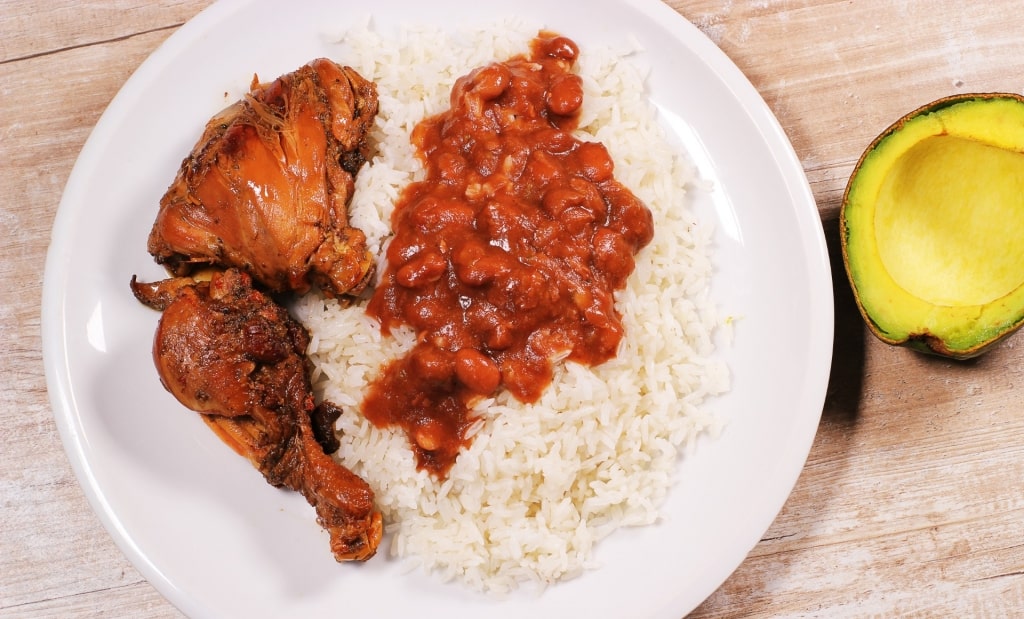
La Bandera Dominicana
“The Dominican Flag” is the name given to a meal of beans, rice and meat. It reflects the country’s tricolor, with its central white cross and corners of red and blue.
The red beans and white rice are an easy fit in this color scheme. The meat–usually braised chicken or beef—is a bit more of a stretch.
The whole reflects the importance of food to the country’s national identity. It’s recognized as the traditional dish of the Dominican Republic.
La Bandera Dominicana is the most common lunchtime meal and a dish that the Dominican Republic is known for. You’ll often see it simply called “plato del dia” on menus.
Along with the rice, beans and stew, expect to be served some fried plantains or a small side salad. Fish or pork can also substitute for the “pollo guisado” (braised chicken), or “res guisada” (braised beef).
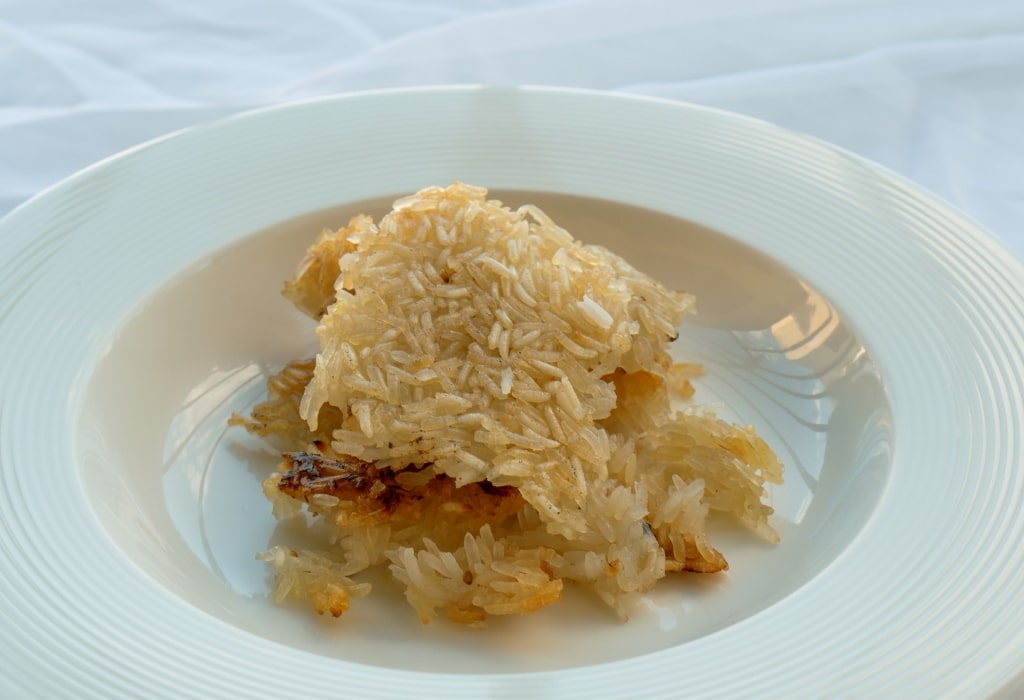
Concon
Incidentally, if you find some burnt rice on top of any dish in the Dominican Republic, you’ve just been served a local delicacy, concón. Like guoba in China, or tahdig in Iran, this crust of rice is prized for its taste and texture.
It’s made simply by adding some oil to the bottom of the rice cooker to crisp up the bottom layer. It’s sprinkled on as an extra flavoring or added to a sauce.
Mofongo
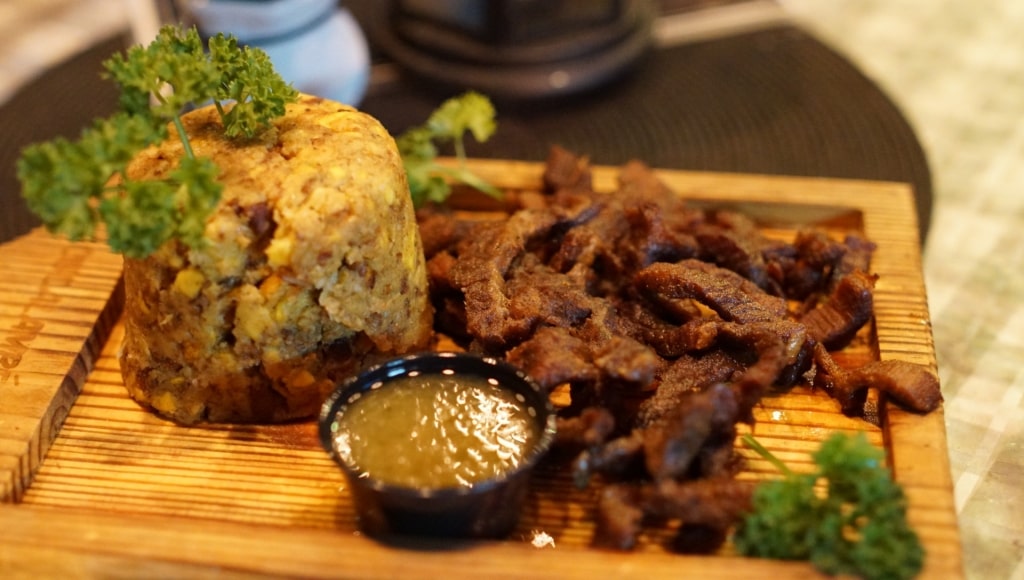
Mofongo
This is another Dominican staple, nowadays made with fried green plantains, but originally with grilled ones. The fried version seems to have reached DR from Puerto Rico, where it’s equally popular.
After frying, the plantains are mashed with fresh garlic and made into a ball. Chicharrón (fried pork rinds) is an essential component as well, either in the mixture or alongside.
Mofongo is served with a broth or sauce as a main course, side dish, or evening snack. It’s a simple dish, but has complex flavors, and one every Quisqueya cook prides themselves on.
Read: Dominican Republic vs. Puerto Rico: Which Should You Visit?
Mondongo
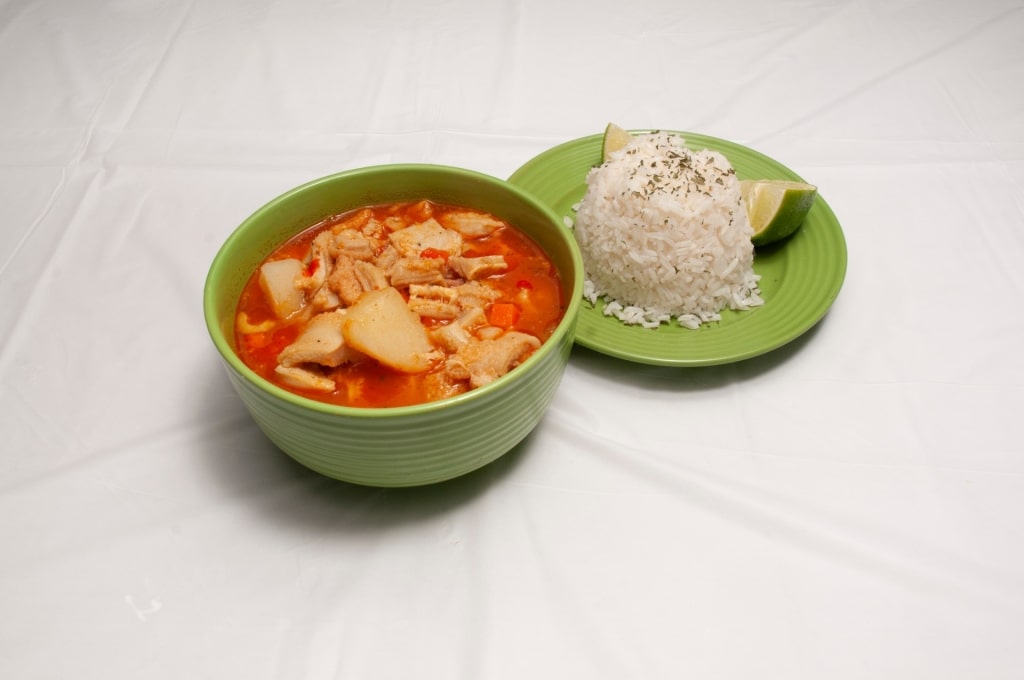
Mondongo
If offal is not to your taste, you’ll not want to confuse mondongo with mofongo. Mondongo is a stew made with beef, cow, pig, or goat tripe.
Some travelers will already know it as chitterlings, or chitlins. It’s tough meat, and needs lengthy stewing with vegetables, herbs, lots of seasoning, and maybe some tomatoes.
Mondongo is comfort food, the first thing many Dominicans will want when coming home. Another dish with similar roots is pico y pala (“pick and shovel”), which is a stew with tough chicken parts such as feet and necks.
Fish
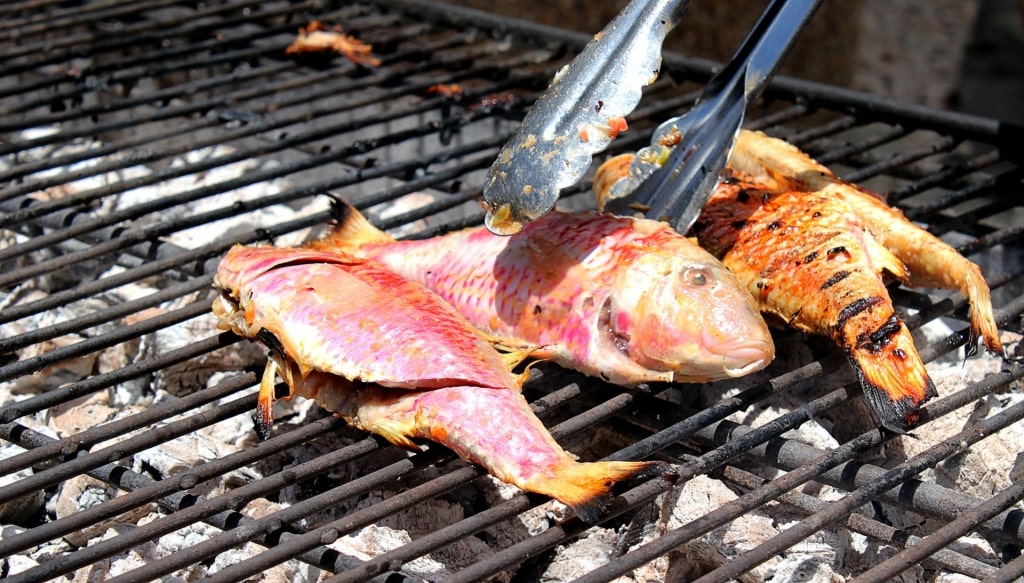
Grilled fish
Despite the country being an island, the traditional menu in the Dominican Republic is surprisingly light on fish. At some of the Dominican Republic’s beaches, however, you will easily find simple grilled fish, or pescado con coco (fish in coconut sauce).
Locrio de Arenque (rice and smoked herrings) is a risotto-like dish—once considered the food of the poor. The herring is soaked for a few hours, then fried with a sazón before being simmered with rice.
Just like a sofrito in Italian cooking, a sazón is a particular cook’s base for many Dominican dishes. It’s a mix of finely diced onion, garlic, green pepper, and tomato, flavored with herbs (such as parsley and coriander) and vinegar.
Pastelón de Plátano Maduro

Pastelón de Plátano Maduro
“Ripe Plantain Casserole” is a lasagna-style dish made with layers of plantain, meat and cheese. It’s hearty and is second only to mangú in popularity for cooking plantains.
Ripe plantains are boiled, then mashed to a smooth pulp with butter. This is then layered with cheese and ground beef with onion and tomato sauce before baking.
Guisada
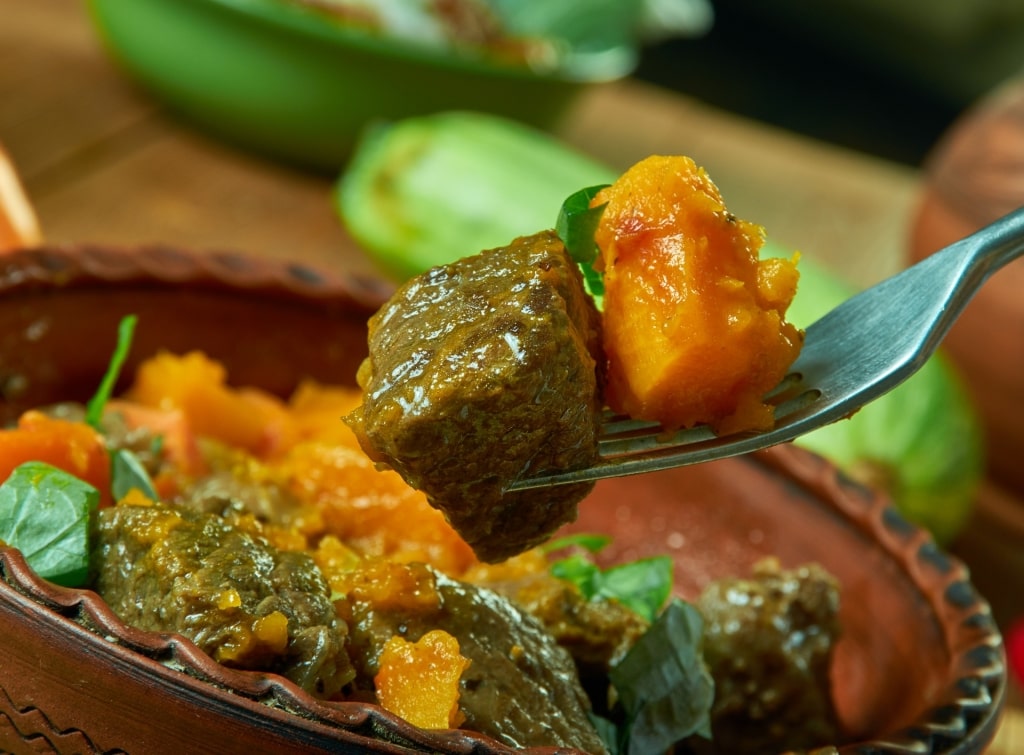
Carne guisada
Carne guisada is a traditional beef stew, slow-cooked with onions and peppers such as jalapeños or Scotch bonnet. There’s also pollo guisado, with chicken, and chivo guisado, with goat.
As you can imagine, goat was the more traditional ingredient but increasing prosperity has made beef a substitute. Goat, fed on wild oregano, still adds an extra flavor to the stew.
The stew is served on tortillas, or with rice or potato. It is also good with chenchén, a cornmeal polenta.
Chapea/chambre
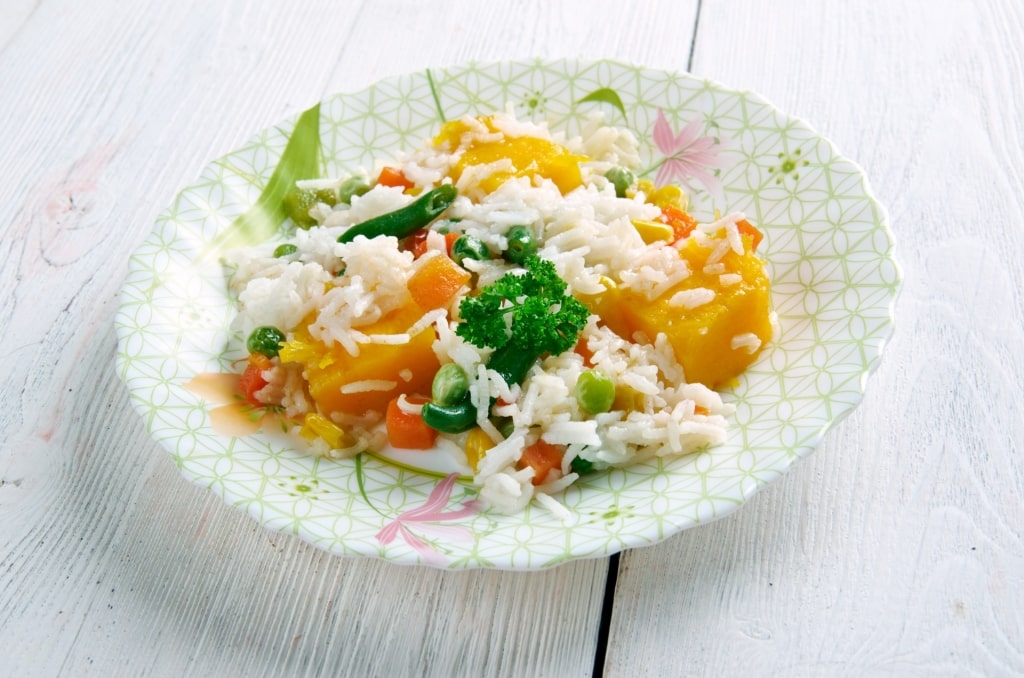
Chapea/chambre
This is a stew of beans, rice, vegetables, and, of course, plantains. Flavoring comes from coriander and sour orange or lime juice, as well as peppers and garlic.
The dish is usually made with a base of sausage or other pork—and/or they can be served on the side. A common topping is sliced avocado. Vegetarians could opt for the avocado option and leave out the meat.
Sancocho
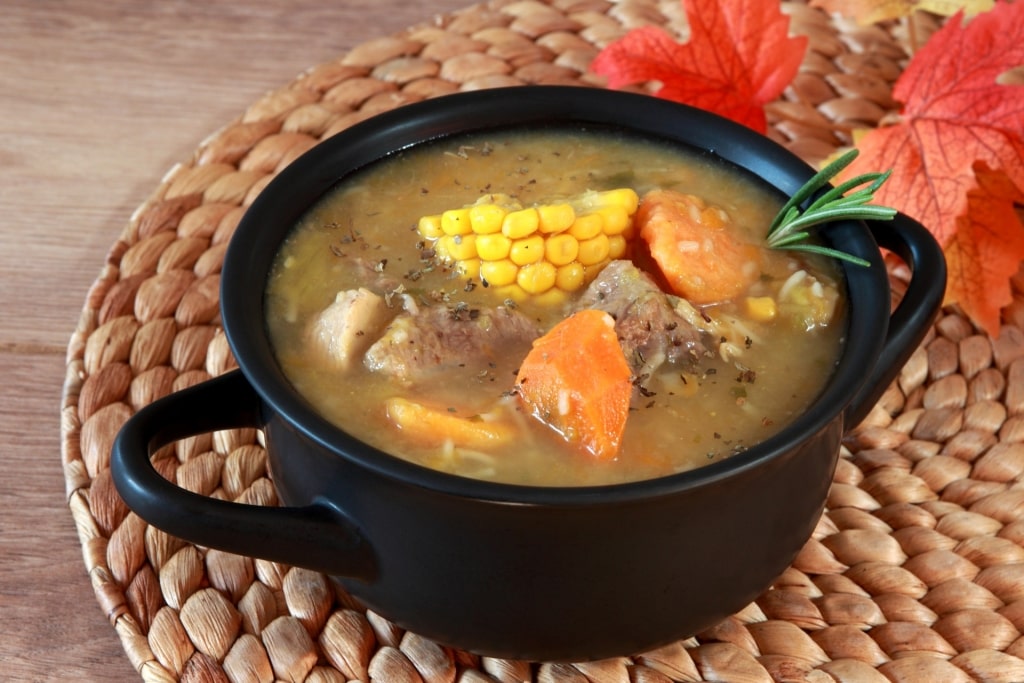
Sancocho
Another great Dominican food is sancocho—a stew with almost everything in it. Everything being potatoes, plantains, yams and yucca, beef, pork and chicken… You get the idea.
It’s hearty and full of flavoring from garlic, herbs, vinegar and “naranja agria” (sour orange), or lemon. As you might expect, it doesn’t need much in the way of accompaniments: plain rice and sliced avocado.
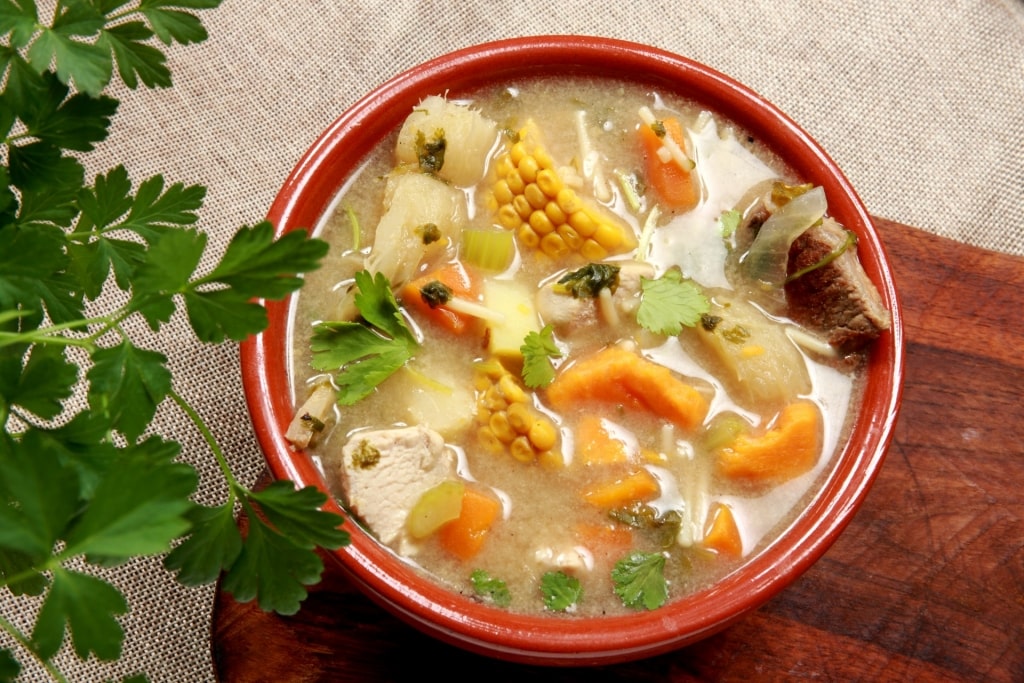
Sancocho de siete carnes
An even heartier version, sancocho de siete carnes, is made for special occasions, such as New Year’s Eve or Sunday dinner. The “seven meats” in its name are beef, goat, pork, pork ribs, pork sausage, chicken, and smoked ham bones.
Chicharrón

Chicharrón
Stalls selling these fried pork rinds can be seen everywhere on the roadside in DR. The aroma is hard to escape as you walk or even drive past, making your mouth water if you’re a fan.
If you’re from America’s Deep South, or from the UK, you’ll recognize it as crackling (or “cracklins”). However, there’s no doubt this fatty, greasy snack is an acquired taste.
For those who don’t eat pork, you can find a variation with chicken. Both are served from stalls, sometimes with sides such as boiled yucca or guineito (green banana, often boiled with peppers and onions).
Chimichurri Burger
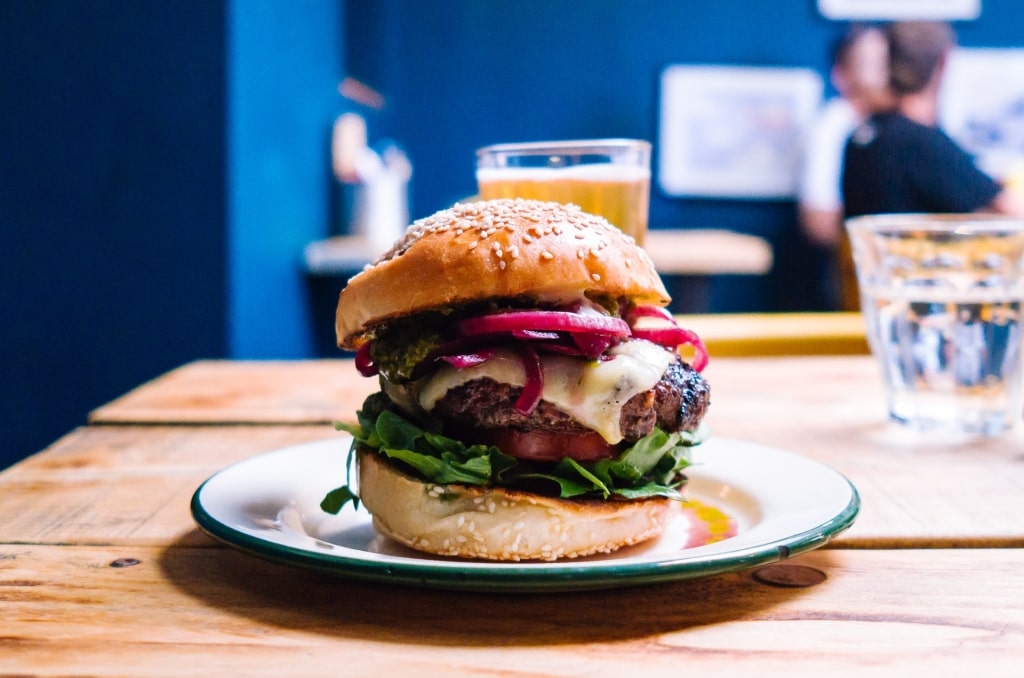
Chimichurri burger
You may be familiar with chimichurri from Argentina or Uruguay. It’s a sauce made with parsley, garlic, and onion, with a few other ingredients depending on the cook.
A chimichurri burger is a local favorite, made with a topping of shredded cabbage (not lettuce) and never with cheese. It’s served in a soft “pan de agua” bun with lots of chimichurri.
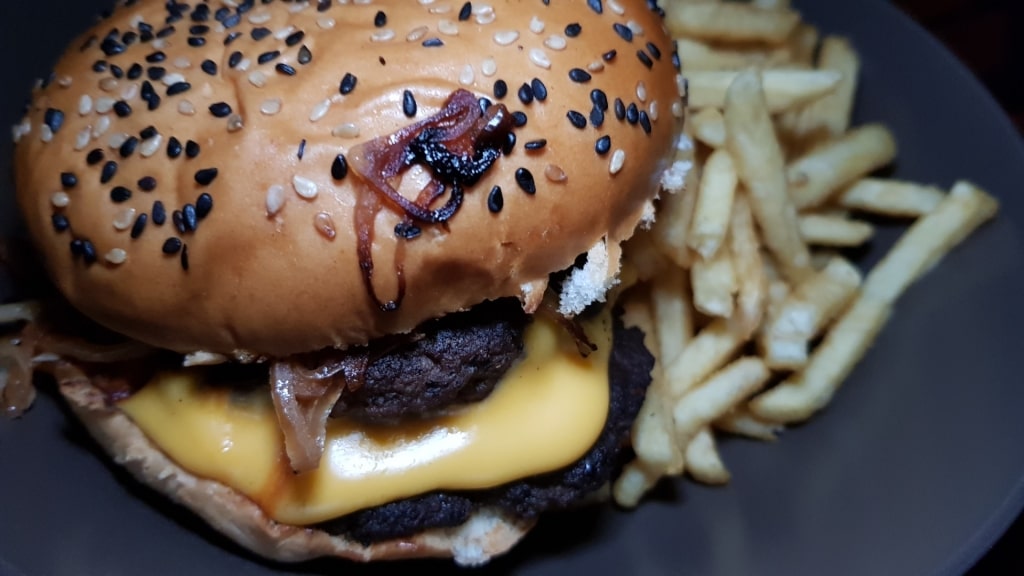
Chimichurri burger
The sauce may have arrived with an Argentine immigrant chef but was quickly picked up by Quisqueyans as their own. You’ll now find “chimi” for sale everywhere, popular as a quick, cheap meal.
Yaroa
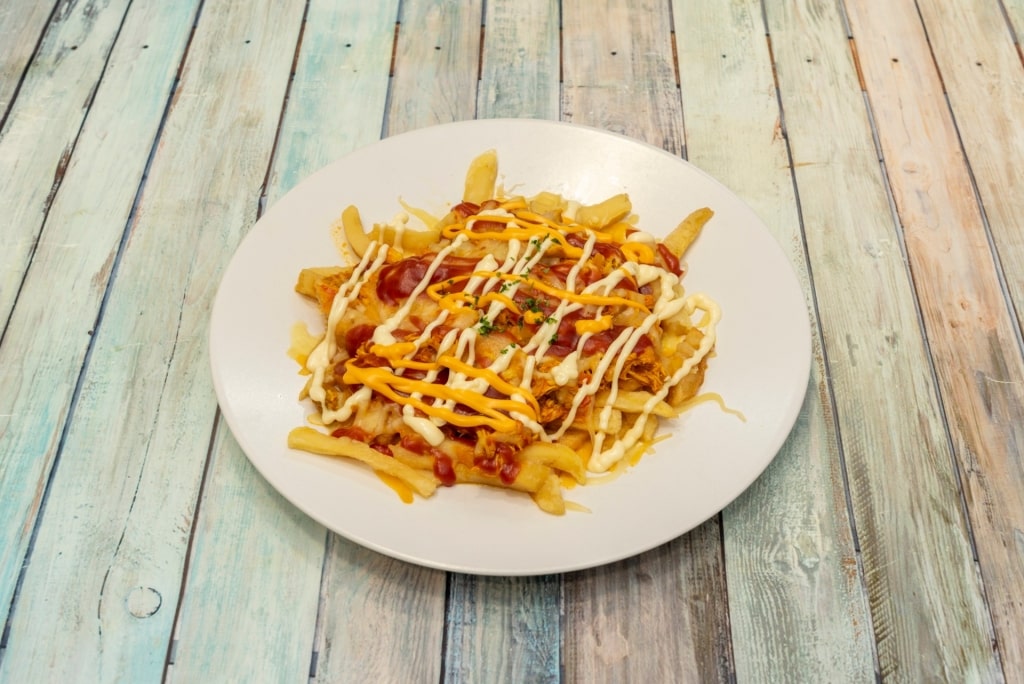
Yaroa
If you’re a Canadian missing your poutine, you’re in luck with yaroa de papa frita. This recent arrival on the Dominican fast food scene is a similar mound of spicy ground beef, french fries and melted cheese.
Yaroa de plátano maduro substitutes mashed plantains for the french fries. Obviously, for either version, you need to add mayo and lots of tomato sauce to complete the picture.
Flan/Quesillo
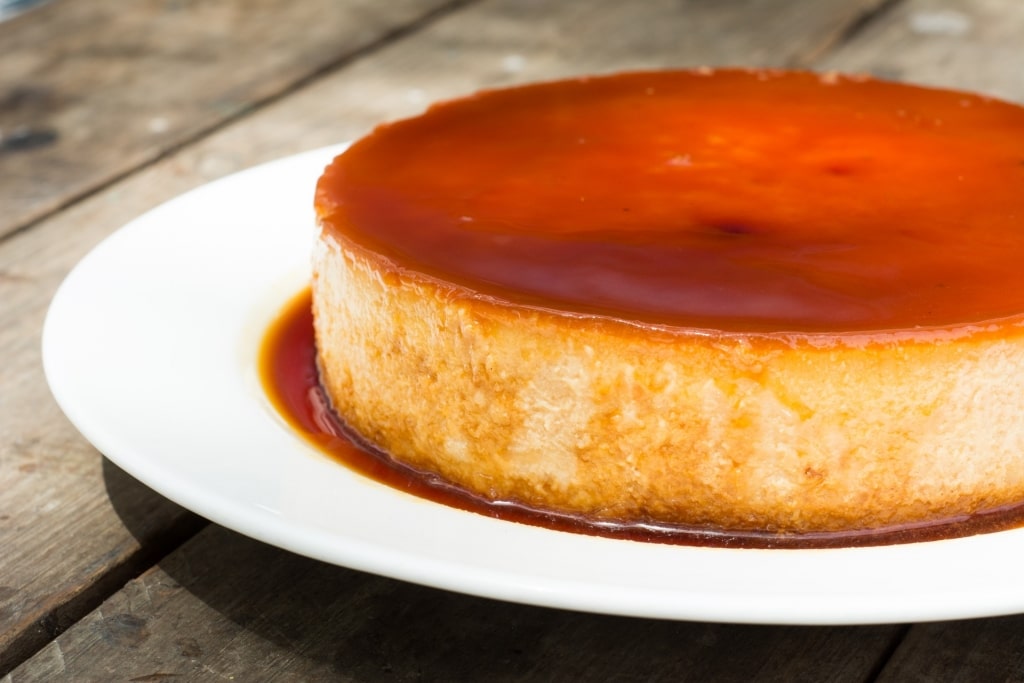
Flan/quesillo
Flan is a crème caramel, and a dessert you’ll find on almost every restaurant menu in the Dominican Republic. As one of the best desserts in the world, it’s also common throughout Latin America, and in Spain.
Quesillo (“little cheese”) is a common name for any variation of flan not based on vanilla. Popular choices for a quesillo include coconut, lemon or orange, and passion fruit.
Habichuelas con Dulce
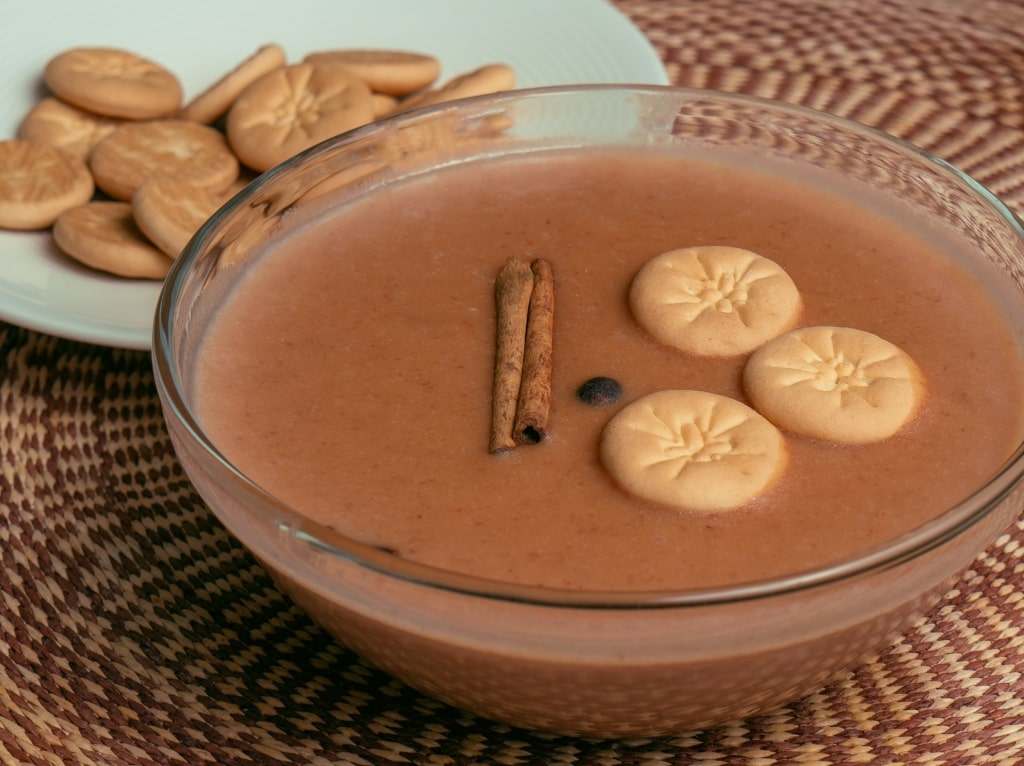
Habichuelas con Dulce
Possibly having Turkish or African roots, this is a soup-like sweet dessert made from red kidney beans. It’s a tradition during Lent and Easter Week, but is found year-round in supermarkets or pastry shops.
It’s made from coconut milk and condensed milk, in which you boil the pre-soaked and puréed beans. Sugar, cinnamon, cloves, vanilla, sweet potato chunks or raisins add extra flavors before it’s topped with milk cookies.
Pica Pollo
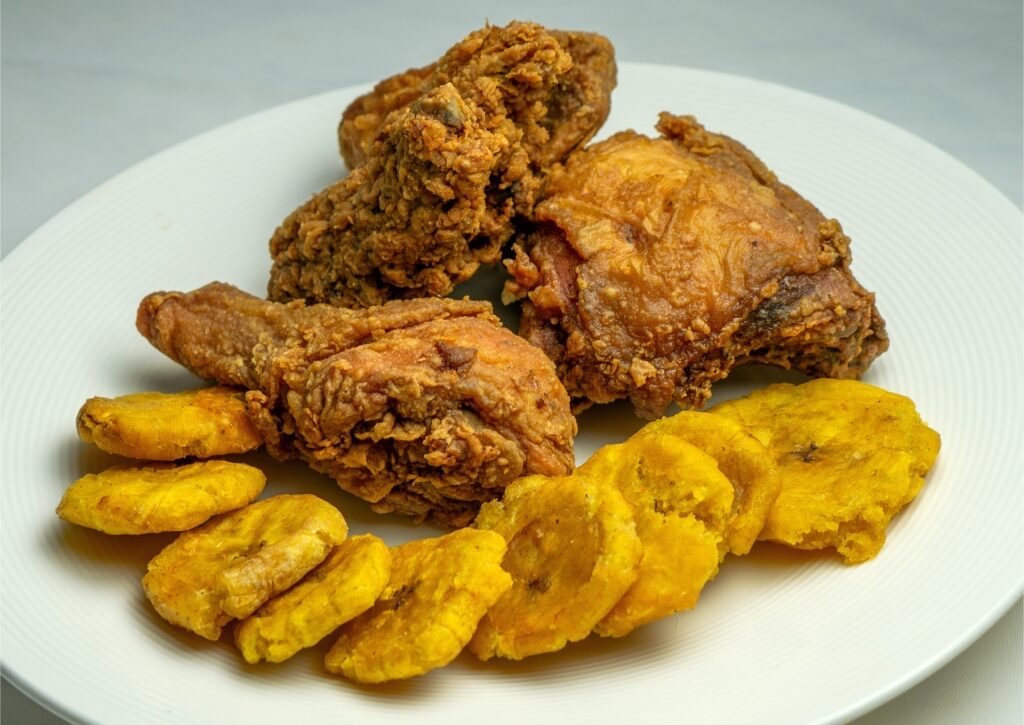
Pica pollo
Pica Pollo is a Dominican twist on fried chicken, typically served with fried plantains or French fries. It’s an easy dish to prepare, which is why it has become a local staple.
Santiago, in particular, is known for its authentic versions, whether you sit down at a casual restaurant or grab an order to go from a street vendor.
Chivo Guisado Liniero
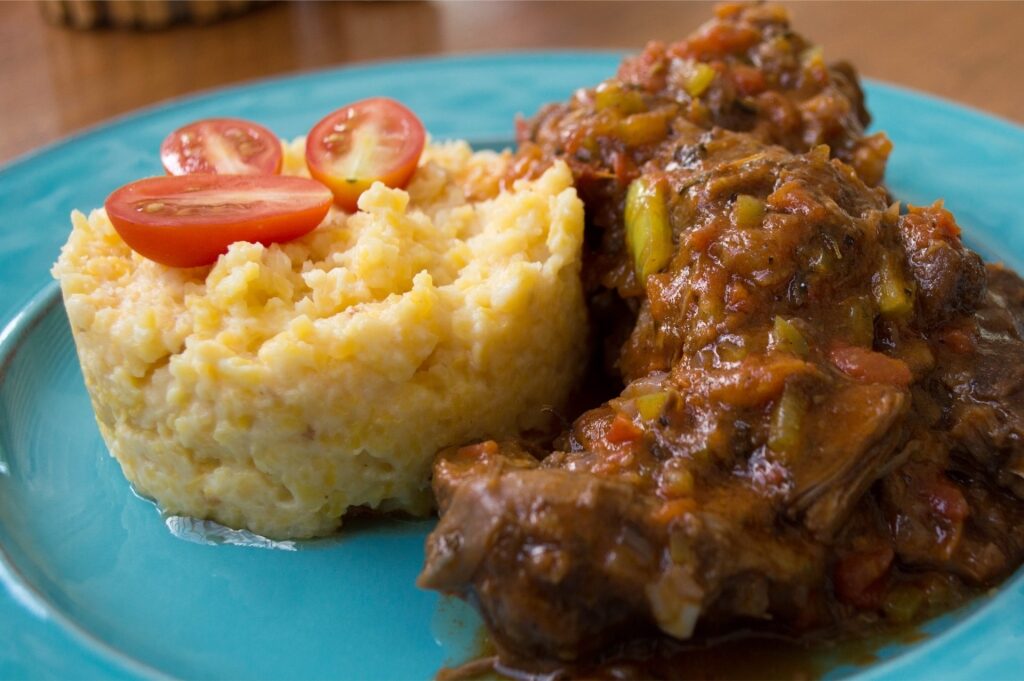
Chivo guisado liniero
This meat dish originated in the northwest of the island and is one of the more flavorful dishes the Dominican Republic is known for.
Chefs slow-cook the meat until it’s very tender and season it with garlic, oregano, and a selection of local spices. Throw in a side of rice or veggies, and it makes for a well-balanced meal.
Locrio
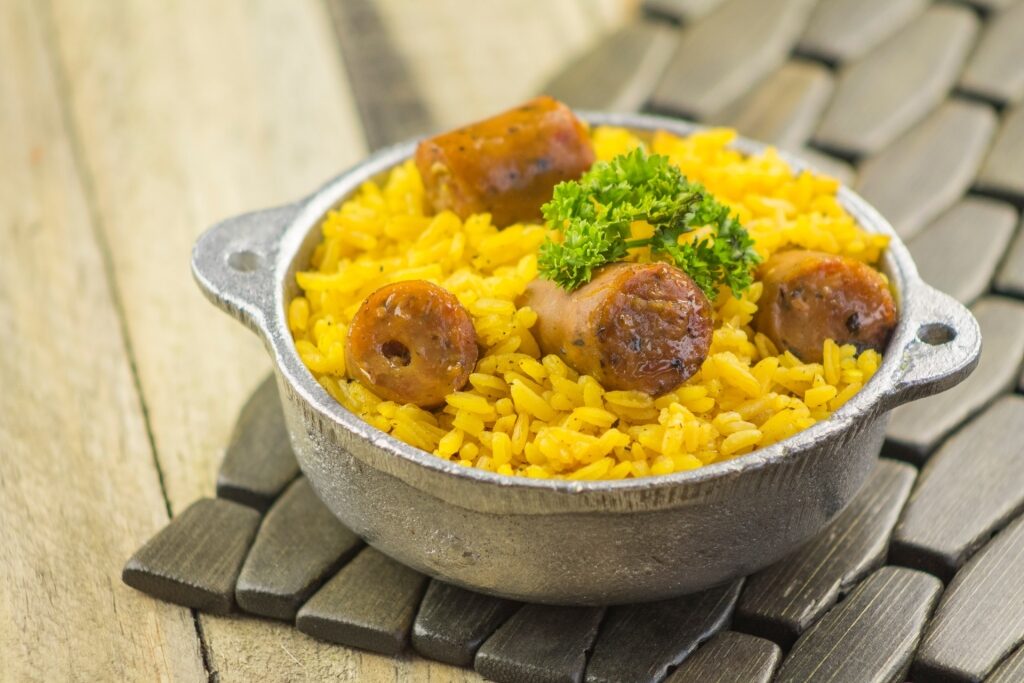
Locrio
A bit like Spanish paella, locrio is cooked using just one pot. It combines rice with meats like chicken, sausage, or seafood.
Toss in some vegetables and a bit of seasoning, and it’s ready to go. Locrio is one of those comfort foods that is hearty and packed with flavor, and is one of many Dominican dishes worth trying.
Near Puerto Plata and other major cities, many restaurants serve locrio with chicken, while in coastal towns, it’s not uncommon to substitute meat for fresh shrimp or squid.
Asopao de Pollo
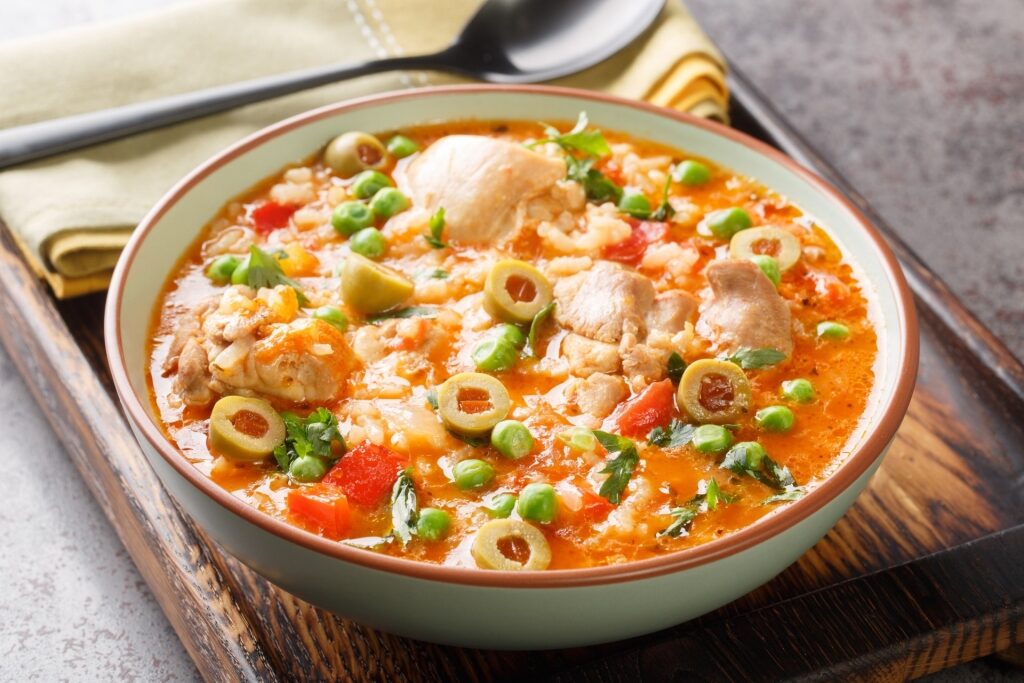
Asopao de pollo
Similar to locrio, asopao de pollo is a chicken and rice soup often described as a hearty stew or even a gumbo. It’s usually served with slices of avocado on the side.
If you’re seated at a restaurant, you can ask your server for some sauce, in case you’d like it spicy. Pair it with a cold beer or beverage of your choice.
Casabe
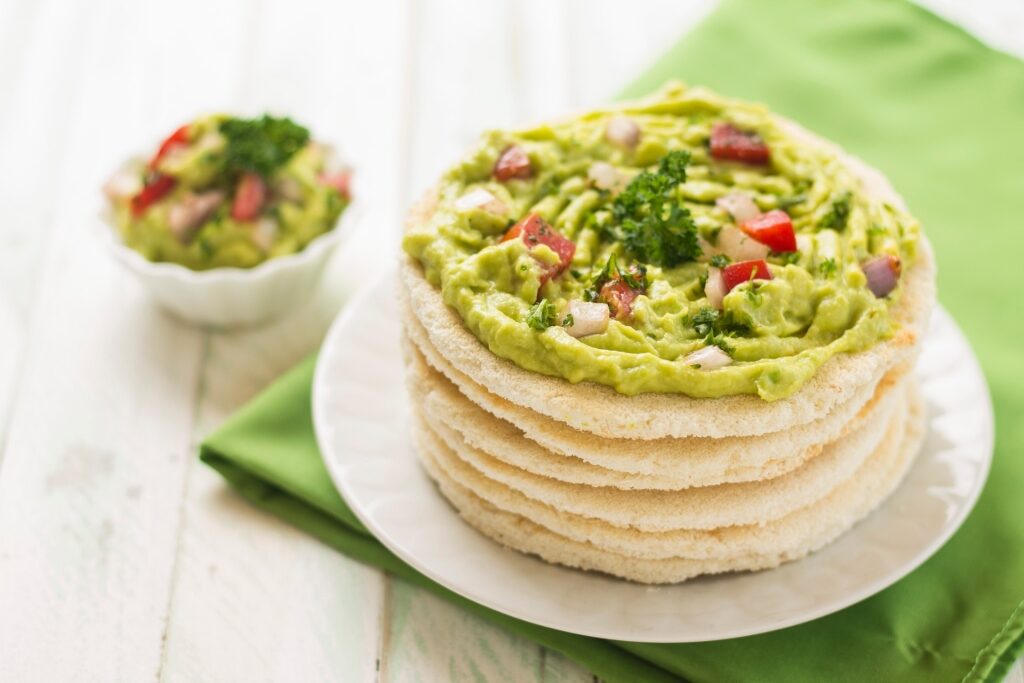
Casabe
Casabe is one of the oldest and most traditional Dominican foods, with deep roots in Taíno culture. It’s a thick flatbread made from yuca flour and baked on a hot surface.
Casabe is sometimes eaten on its own, like a cracker, or used as a base for toppings such as avocado.
Chenchen
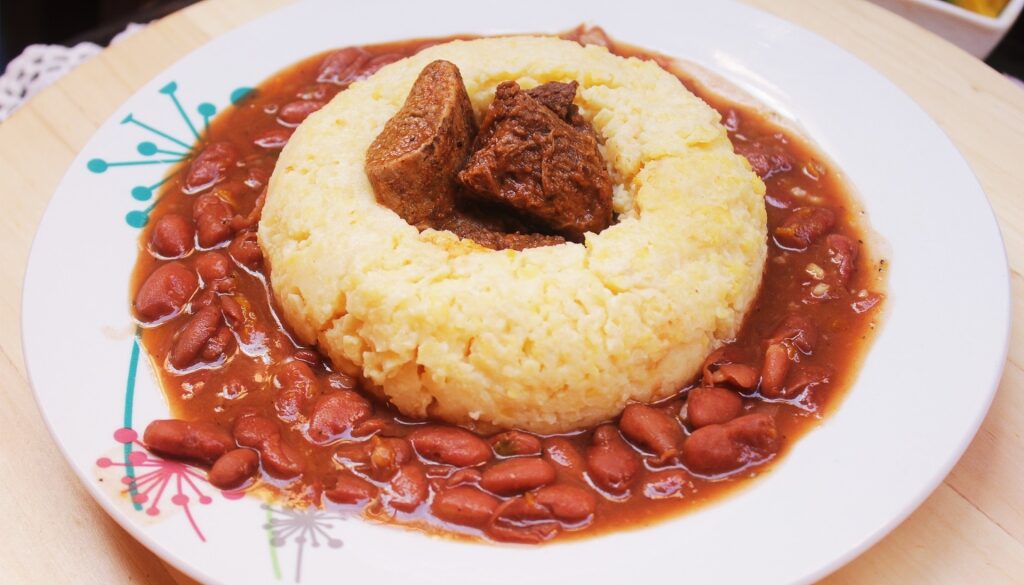
Chenchen
Chenchen is a savory porridge made from cracked corn, slow-cooked with a blend of milk, water, and coconut milk. In San Juan de la Maguana in particular, it’s common to see chenchen paired with goat meat, chicken, or pork as part of a hearty stew.
Like a few other dishes on this list, chenchen is a Dominican comfort food that many locals grew up eating at family gatherings. Some people enjoy it for breakfast, while others serve it as a savory side for lunch or dinner.
Pescado con Coco
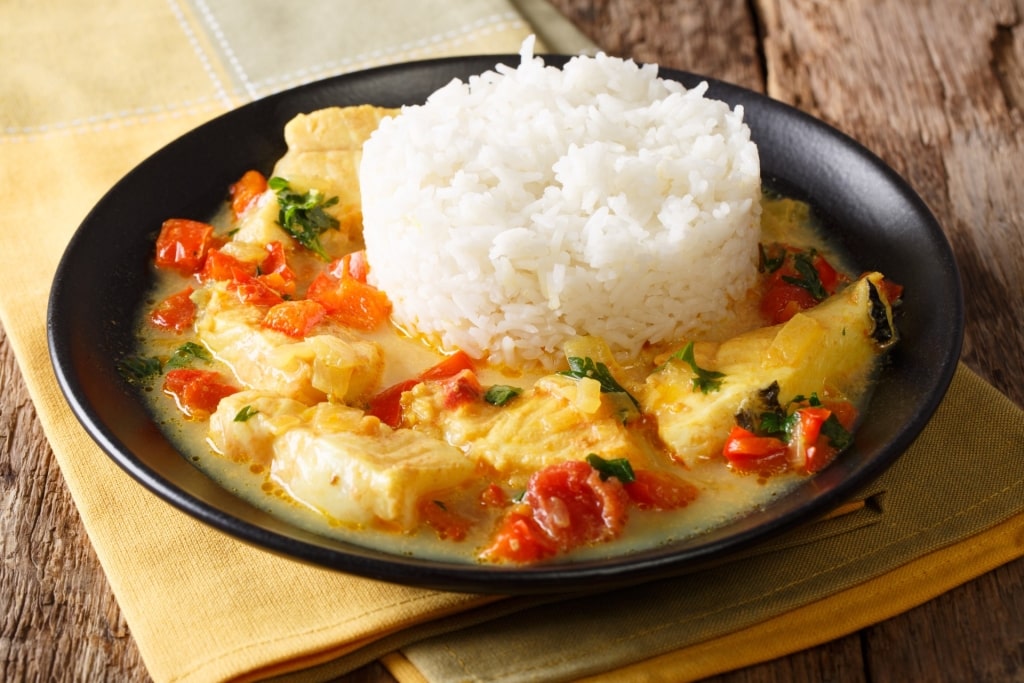
Pescado con coco
“Pescado” means fish in Spanish, and pescado con coco literally translates to fish with coconut. Other ingredients in the dish include garlic, peppers, and cilantro.
The creamy coconut milk sauce gives the fish a distinct flavor, and, as you might expect, it’s typically served with rice and fried plantains. It’s another standout among popular Dominican dishes.
Longaniza
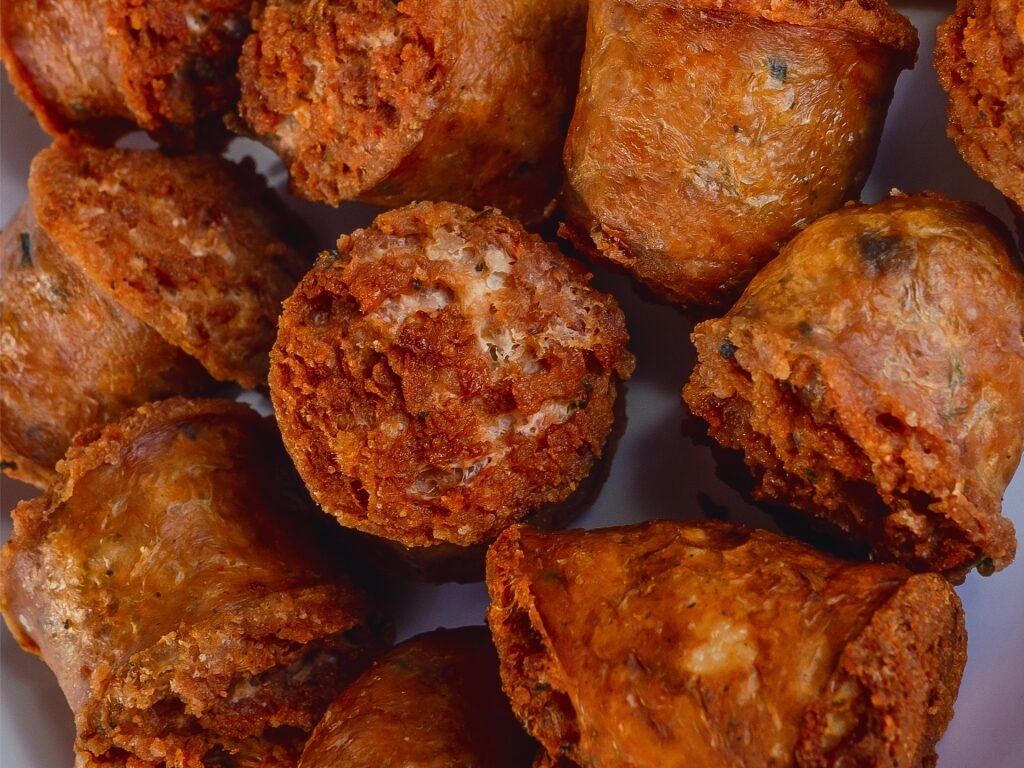
Longaniza
Not to be confused with chorizo, longaniza is a long and thin type of sausage made from pork and typically grilled or fried. It first emerged during colonial times and has been a Dominican culinary staple ever since.
Seasonings like garlic, oregano, and other local spices give it a bold, almost smoky flavor. Serve it with rice, beans, and eggs, and you’ve got one hearty meal.
Yaniqueque
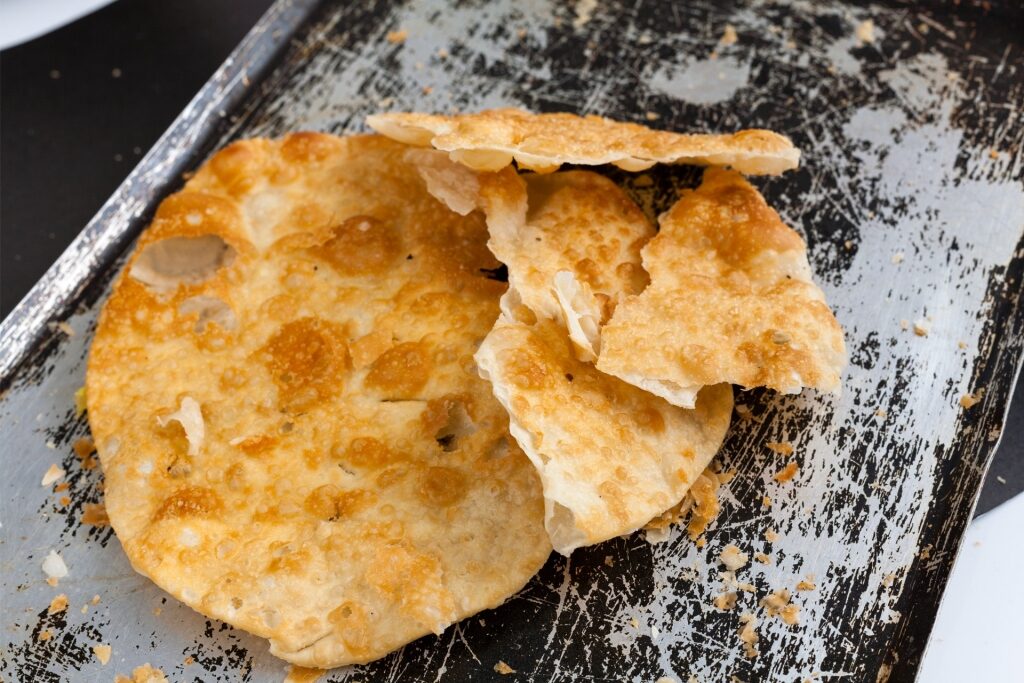
Yaniqueque
If you’re craving a quick, light snack that won’t spoil your appetite for the next meal, try a yaniqueque. This fried dough is made from flour and water, and is light yet crispy.
It’s a perfect grab-and-go snack, so pick one up from a street vendor as you explore local markets or the streets around Puerto Plata’s Taino Bay.
Read: Best Things to Do in Puerto Plata
Batata Frita
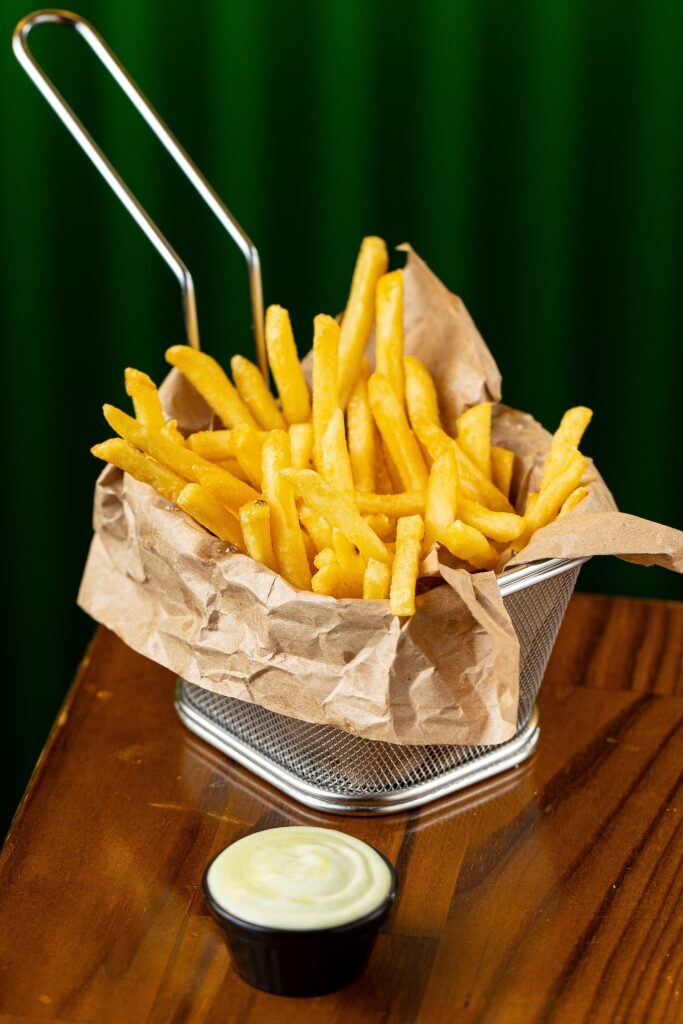
Batata frita
Translating to “fried sweet potato,” batata frita are sweet potato fries served on their own as an appetizer or as a side dish for a larger entrée. Depending on where you order them, you might also get a dip or two on the side, such as garlic sauce, aioli, or mayonnaise.
Arepitas de Maíz
Made from cornmeal, eggs, milk, butter, and a few other ingredients, arepitas de maíz are a beloved snack across the Dominican Republic.
They are small, round, and slightly sweet, making them popular at any time of day. Enjoy one at breakfast with a hot cup of coffee, or order it as a side dish at dinner.
Majarete
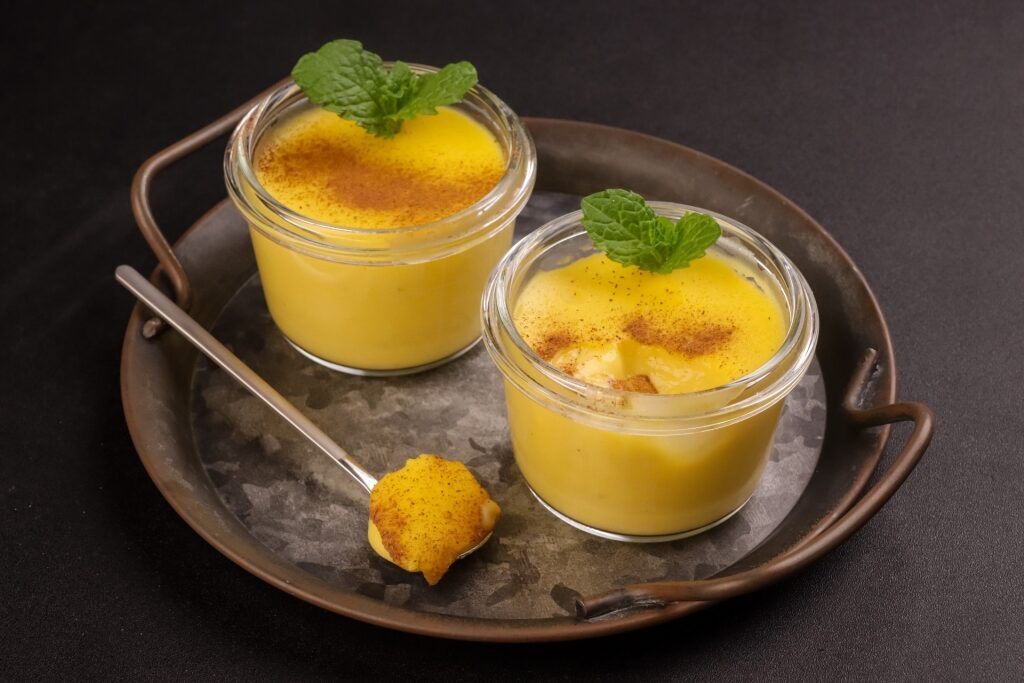
Majarete
When it comes to Dominican desserts, majarete is hard to beat. This creamy corn pudding is a staple on many menus and is surprisingly simple to make. Recipes vary, but you can usually count on tasting cinnamon, vanilla, and other warm spices.
Dulce de Leche Cortada
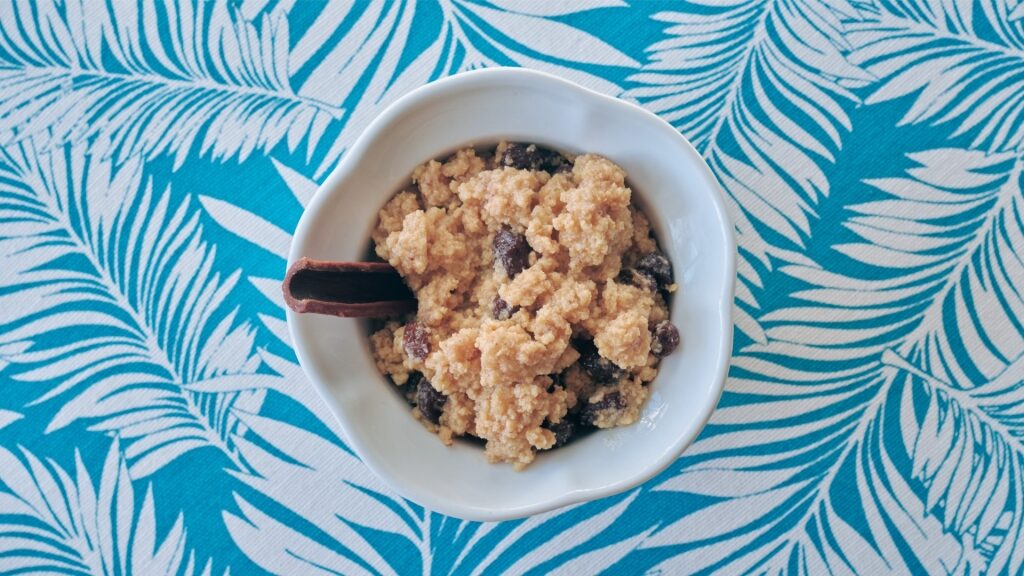
Dulce de leche cortada
Another sweet treat you’re likely to find on many Dominican dessert menus is dulce de leche cortada. This traditional dish is made from milk that has been purposely curdled, then slowly simmered with sugar and cinnamon.
Some dulce de leche cortada recipes also include a touch of vanilla. Typically served chilled, it’s a refreshing choice on especially hot days.
Buñuelos de Yuca
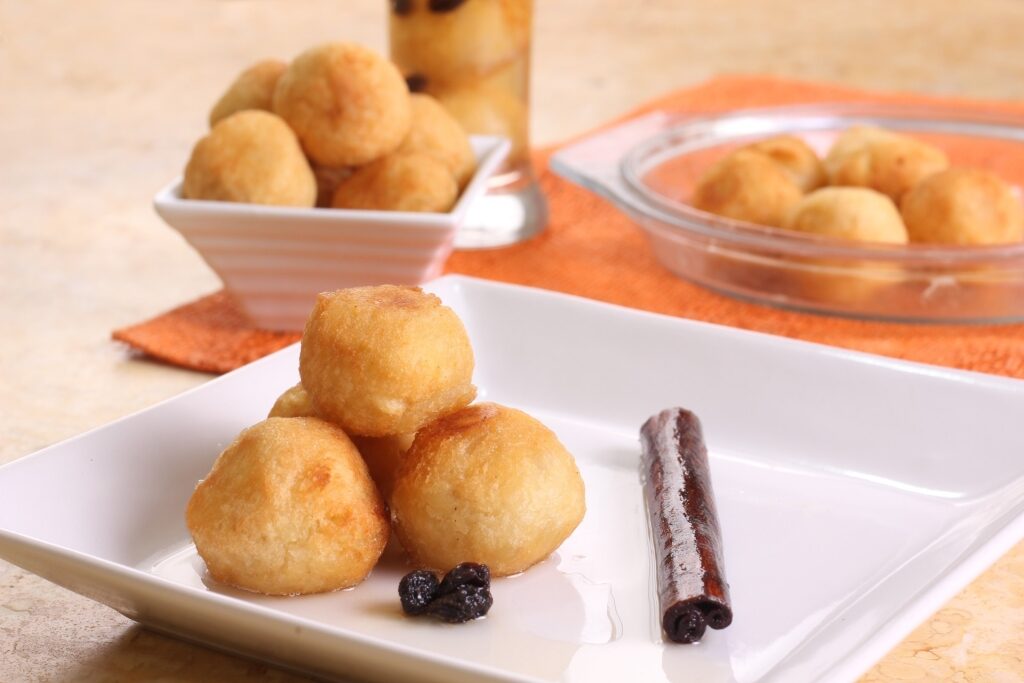
Buñuelos de yuca
These golden fritters are made from mashed yuca (cassava), eggs, and butter.
Once the dough is ready, it’s rolled into small, bite-sized balls and deep-fried until crisp and golden on the outside, soft and fluffy on the inside. The last step is drizzling them with a warm syrup flavored with cinnamon.
Buñuelos de yuca are a staple during the Christmas season and Easter celebrations, but you can also find them year-round in most local bakeries.
Helado de Batata
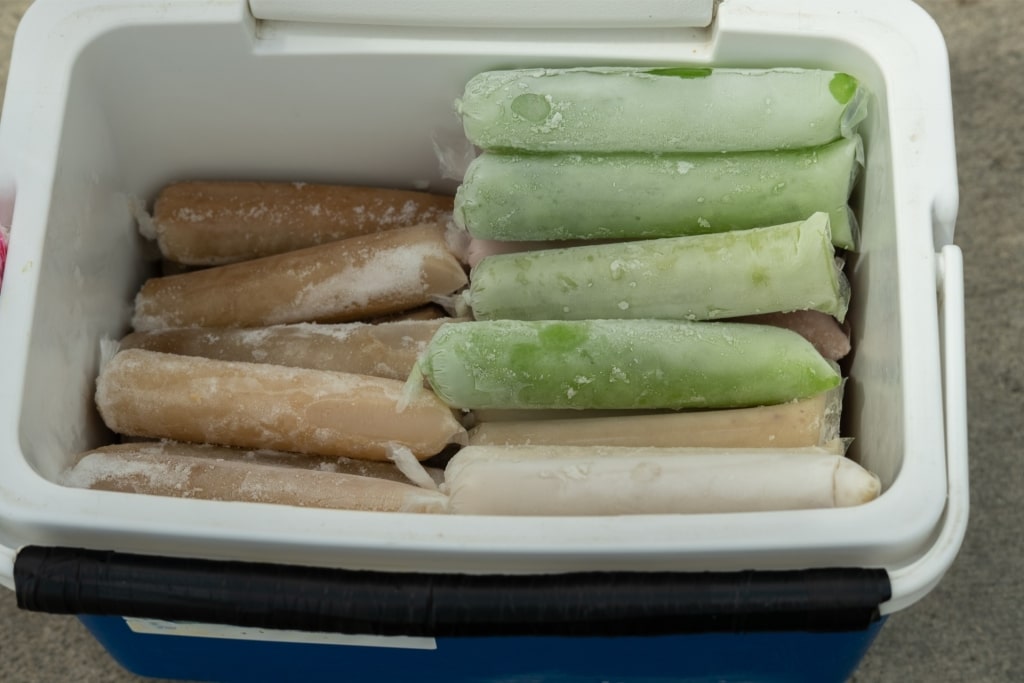
Helado de batata
Helado means “ice cream” in Spanish, and batata is a local variety of sweet potato with a naturally creamy texture.
To make helado de batata, the batata is first boiled and mashed, then blended with milk, sugar, cinnamon, and nutmeg. The result is a silky frozen dessert with a mild, subtly sweet flavor, which is a nice alternative to more common tropical ice cream flavors like coconut or mango.
Morir Soñando
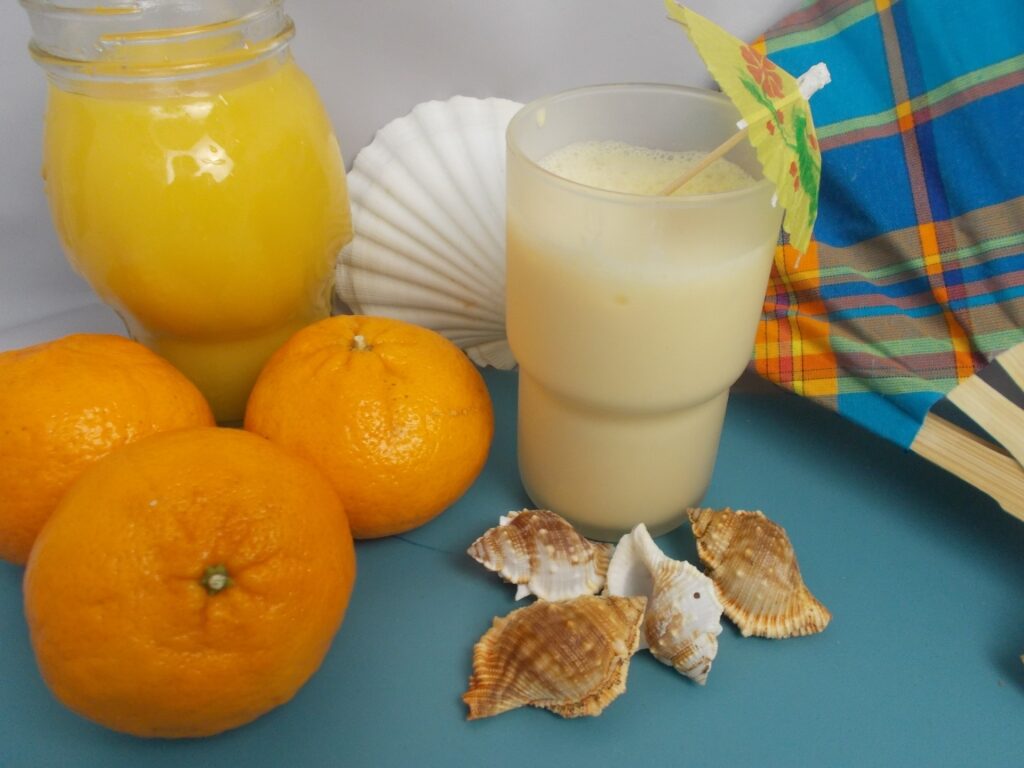
Morir soñando
This refreshing drink literally translates to “to die dreaming,” and after tasting it, it’s easy to understand why. Days in the Dominican Republic can get pretty hot, so sipping this sweet and tangy chilled concoction of milk, orange juice, sugar, and ice is a great way to cool down.
Although this mocktail has no alcohol on its own, you’ll find it available at most bars simply for the taste. Of course, you can always order it with a shot of rum or Licor 43 for a little kick. Drink it as a standalone or pair it with a few traditional Dominican dishes for a full local experience.
Mamajuana
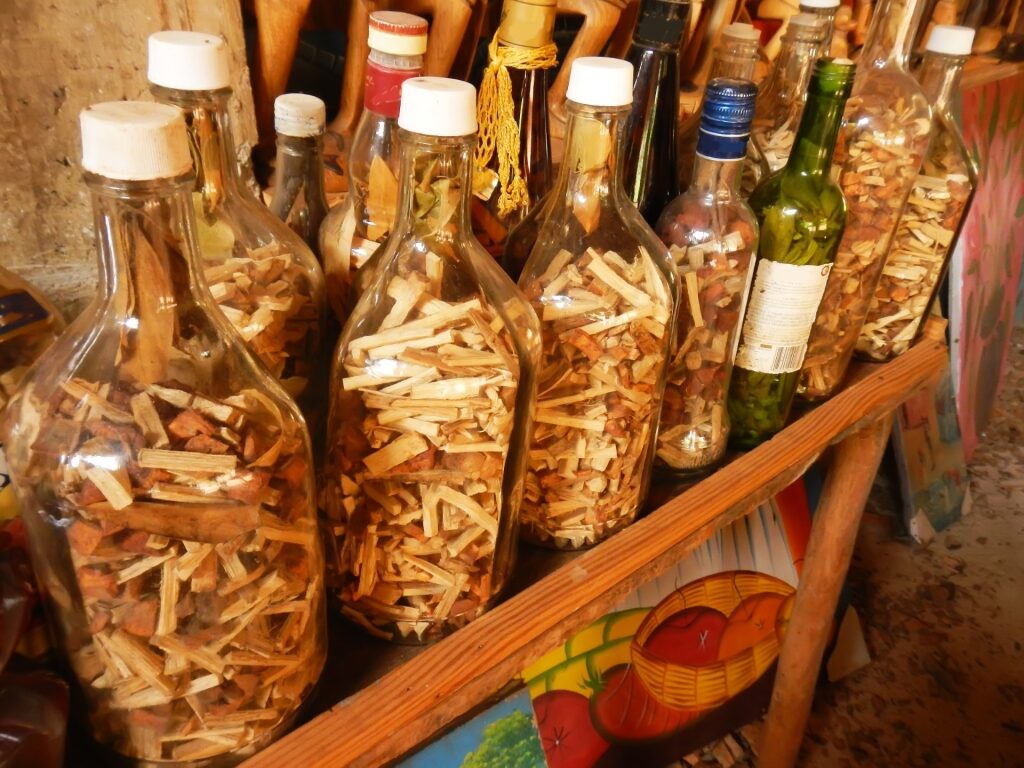
Mamajuana
Another go-to drink to order at the bar is Mamajuana, sometimes loosely compared to Spanish sangria because both can contain wine, though Mamajuana is much more herbal in flavor.
This traditional Caribbean cocktail is made by soaking rum, red wine, and honey with a blend of herbs and tree bark. If you don’t have rum on hand, you can substitute it with another type, though purists stick to the classic recipe.
As a fun fact, many Dominicans associate Mamajuana with health benefits, and some even say it’s a powerful aphrodisiac.
Food Culture & Etiquette
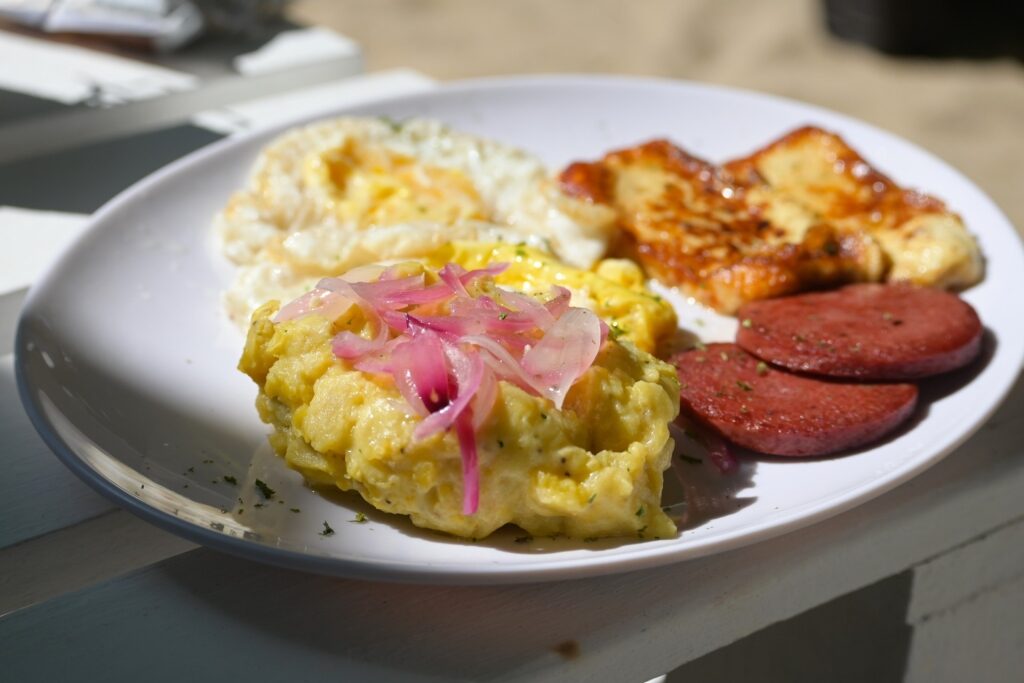
Mangú
Most locals in the Dominican Republic eat three meals a day, though the timing and type of food can vary. Breakfast is usually something light, like fresh tropical fruit, bread, and a cup of coffee to perk up.
People who prefer something heartier for breakfast may opt for mangú. Lunch is the largest meal of the day and usually includes rice, beans, chicken or other meat, a simple salad on the side, and fried plantains. Dinner is generally consumed later in the evening.
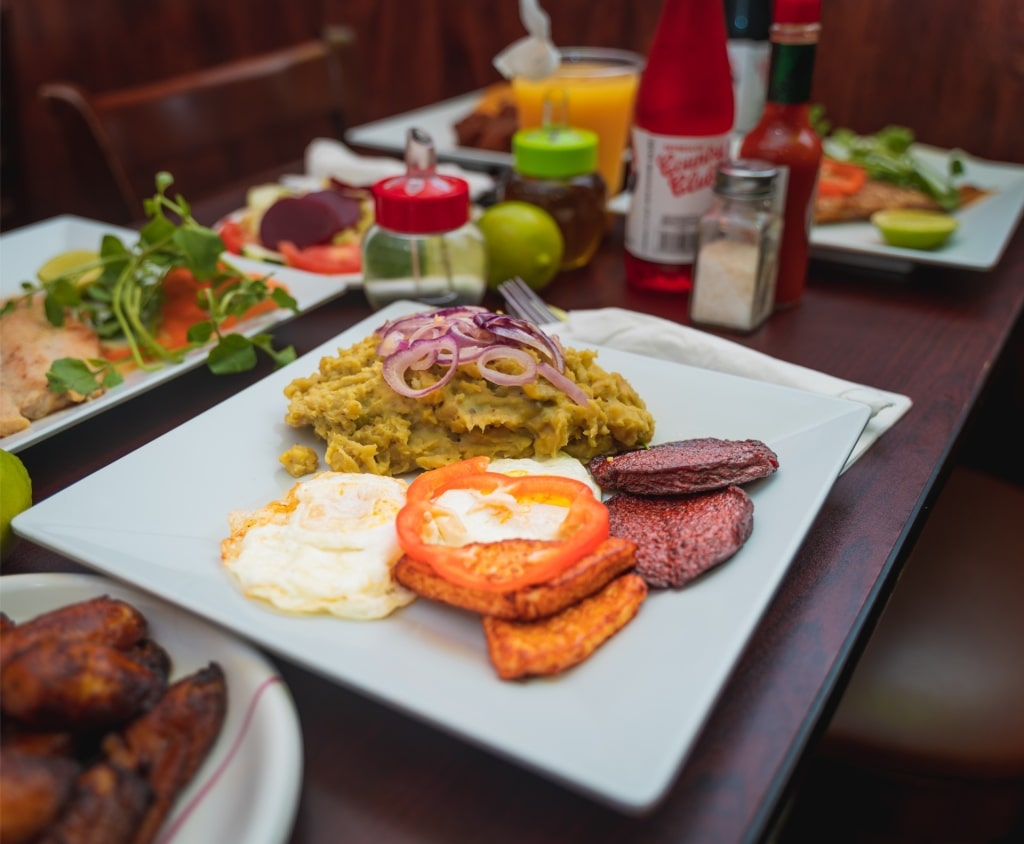
Restaurant in the Dominican Republic
Since food is a way to connect with others, meals are meant to be enjoyed and never rushed. Even afternoon coffee is a chance to connect with those around you and even make new friends.
It’s common for families and communities to gather on Sundays for several hours to eat, connect, and catch up on the previous week. Unless you have an allergy or are no longer hungry, it’s seen as polite to accept whatever food is offered to you rather than declining.
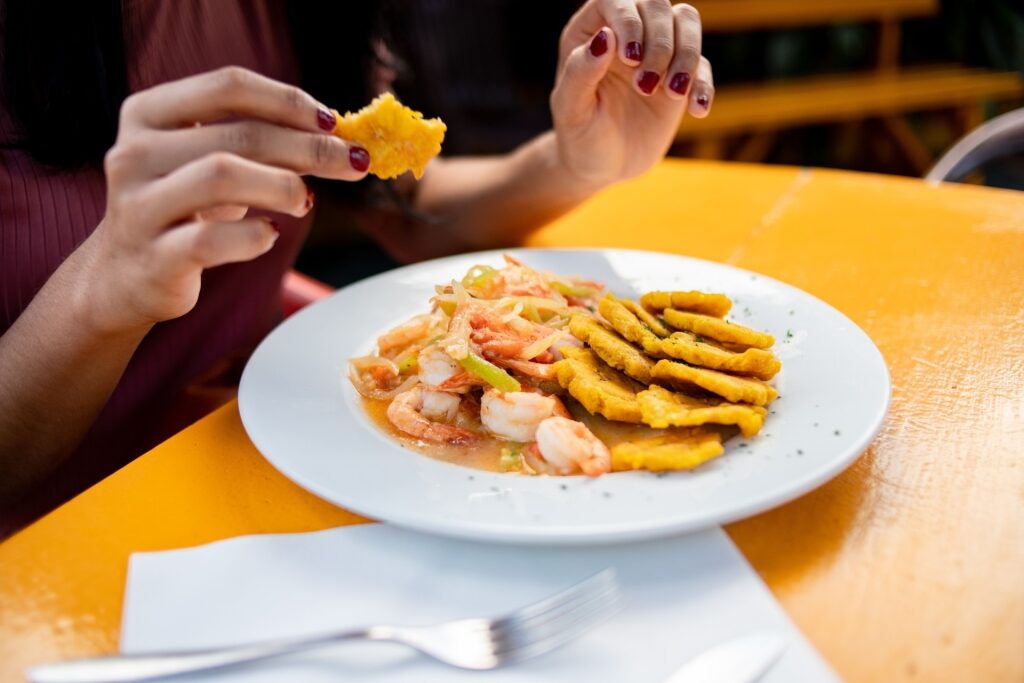
Tostones
As for tipping, most restaurants, especially in the tourist areas, automatically add a 10% service charge to the bill. Technically, no further tip is needed, although it never hurts to leave an extra 5% to 10% for exceptional service.
Tipping is less common for street food vendors, although rounding up is a friendly way to show your appreciation. Cards are accepted at most larger restaurants, although it’s helpful to have cash on hand.
Dominican Food FAQs
Is the Dominican Republic a good food destination?
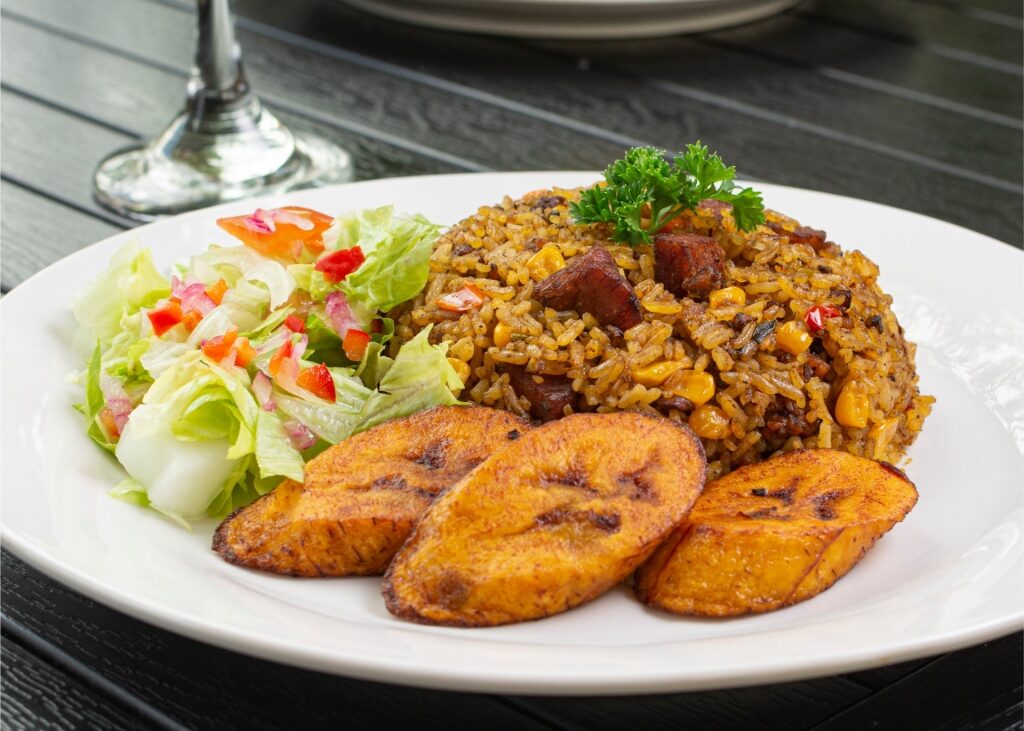
Dominican food
Most travelers would agree that the Dominican Republic has an impressive culinary scene and is worth experiencing. Although every dish is different, Dominican food is flavorful and has deep ties to African, Taino, and Spanish cultures.
Depending on what you’re in the mood for, there’s everything from flavorful stews to fresh seafood. Also, how expensive a restaurant is doesn’t necessarily equate to ‘better.’ For example, there are plenty of street food stalls, no-frills beach bars, and family-run joints that serve up some very flavorful Dominican dishes.
What dish is the Dominican Republic most famous for?
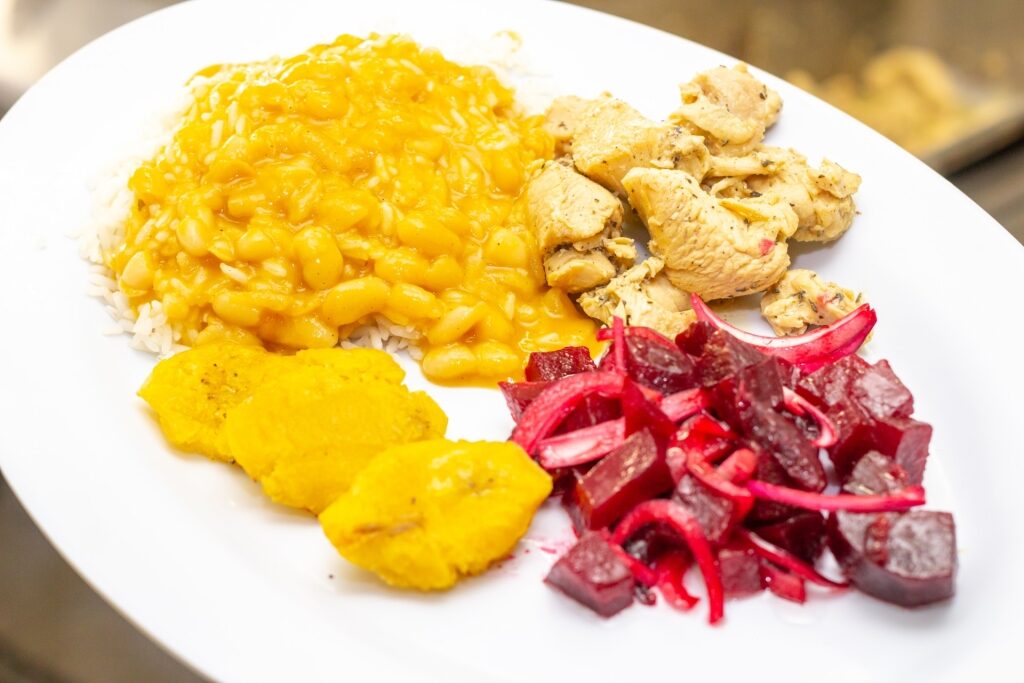
La Bandera Dominicana
The national dish, La Bandera Dominicana (“The Dominican Flag”), is a plate of white rice, beans, and meat served with salad and fried plantains. The combination is said to reflect the colors of the Dominican flag and is a daily lunch staple across the country. Chicken is usually the meat of choice, but sometimes it’s substituted for pork or beef.
What time does dinner typically start in the Dominican Republic?
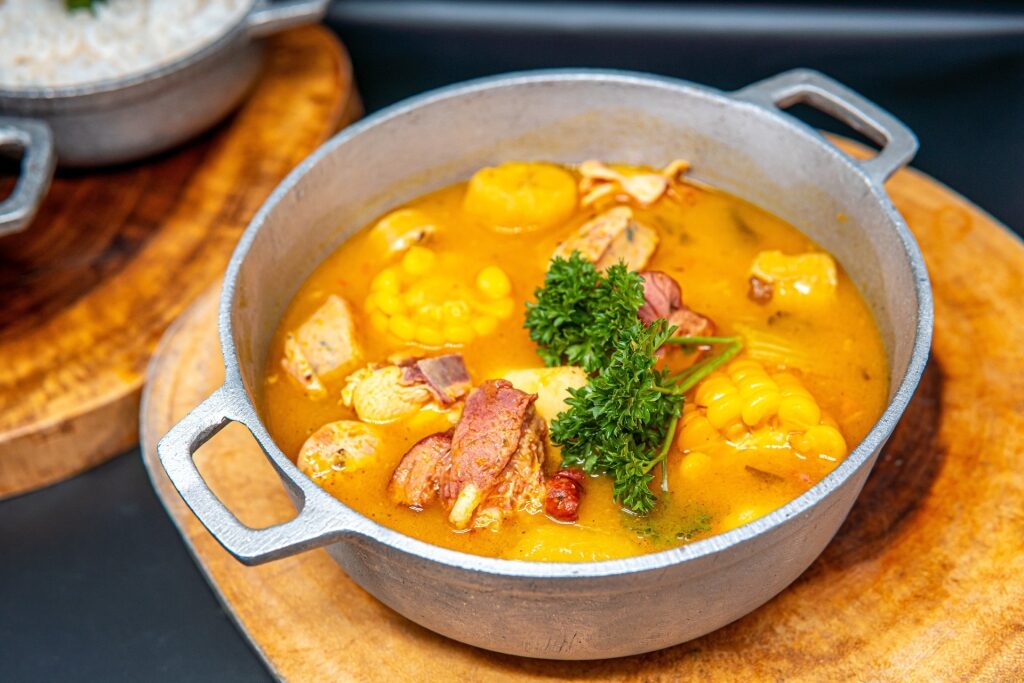
Sancocho
In the Dominican Republic, lunch is the biggest meal of the day, which means that dinners are light. Most Dominicans eat lunch between noon and 2 p.m., and they’re usually not too hungry until around 7 p.m. or so. Of course, this largely depends on personal preference and a person’s particular work schedule and family obligations. Some people might eat as early as 6 p.m. or as late as 10:30 p.m.
Are there any food customs I should know about?
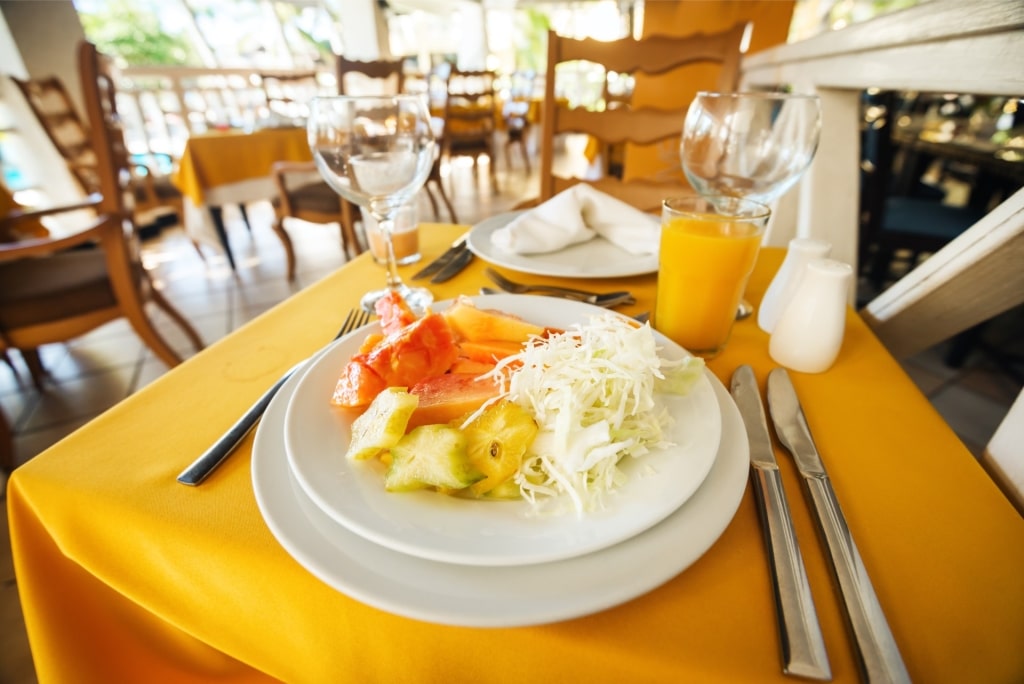
Restaurant in the Dominican Republic
Unlike in the U.S. and some other parts of the world, it’s rare to see people in the Dominican Republic rushing through mealtime. For them, meals are social events and an opportunity to gather with friends, family, or colleagues. It’s customary for everyone to greet each other before sitting down at the table to enjoy their meal. Many local restaurants may serve fruit juice, something they call ‘refrescos’ as well.
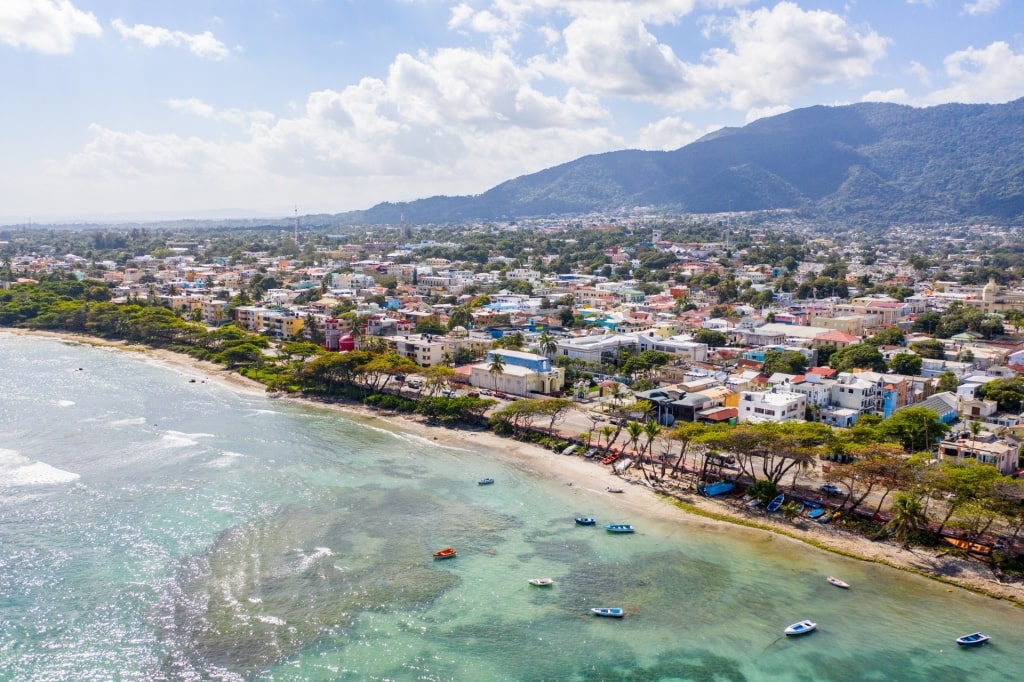
Puerto Plata
Has this taste of the best food from the Dominican Republic sharpened your appetite for a visit to the island? Then browse our cruises to the Dominican Republic to find an itinerary that will take you to this lovely Caribbean nation.
